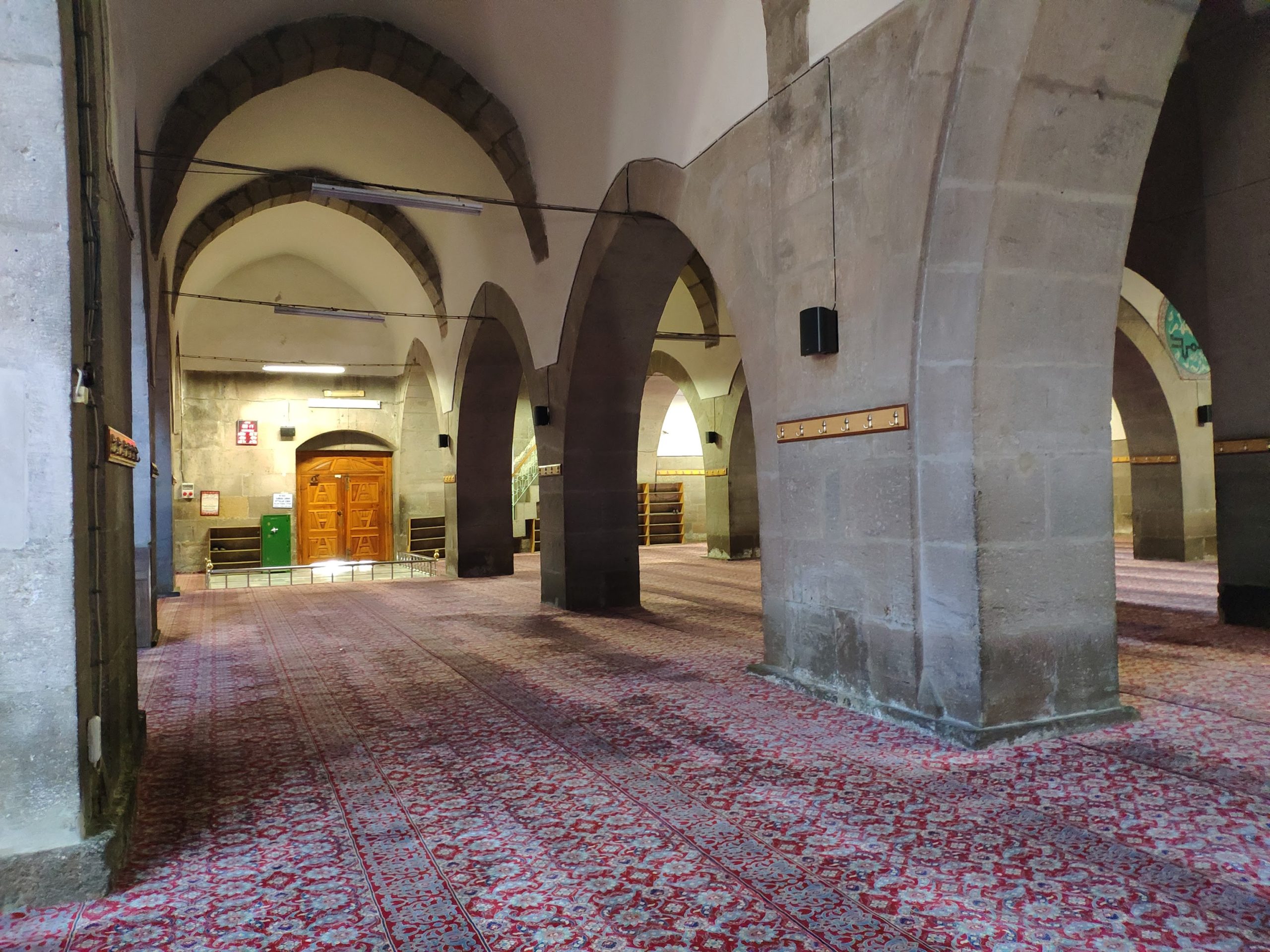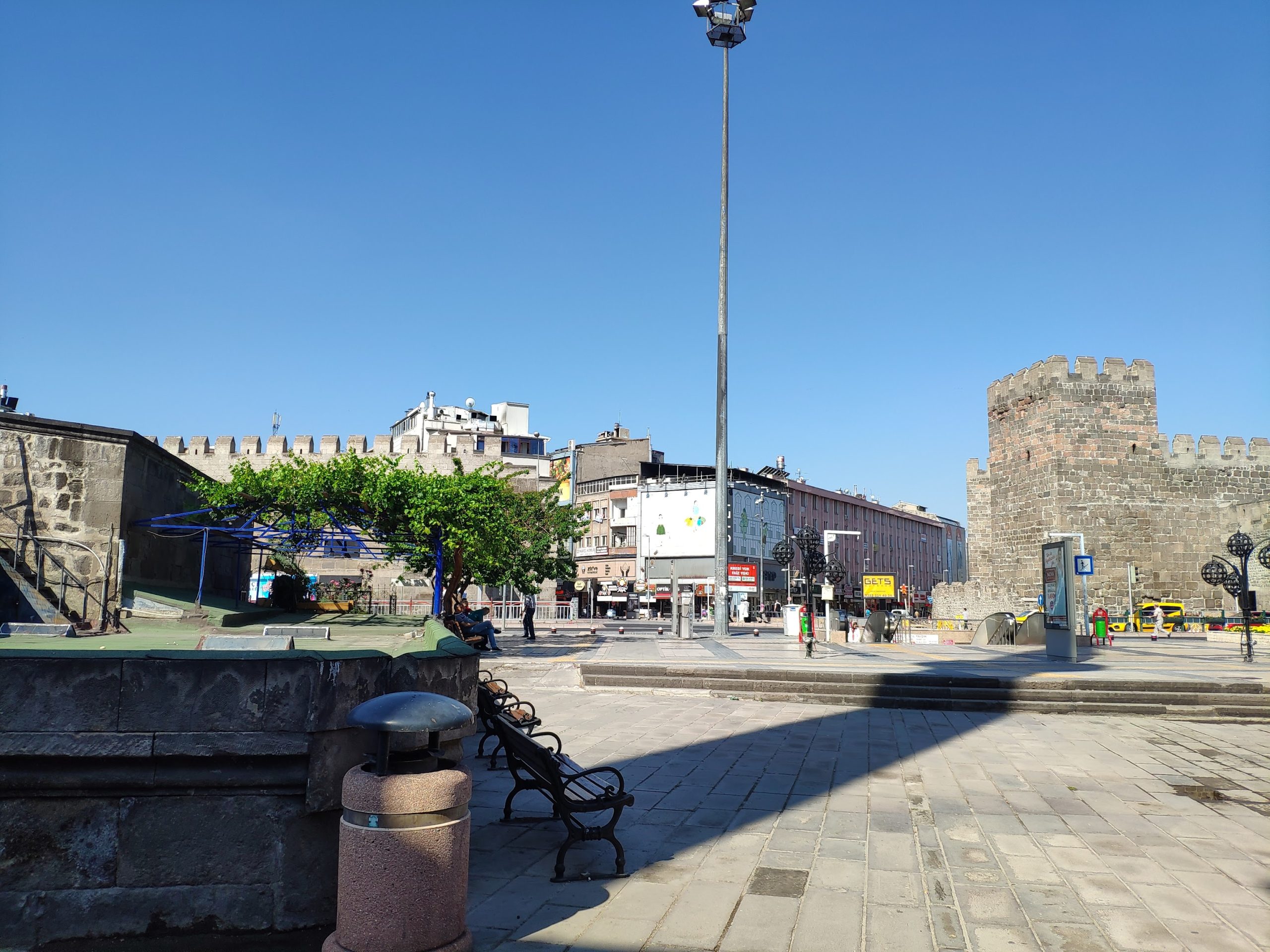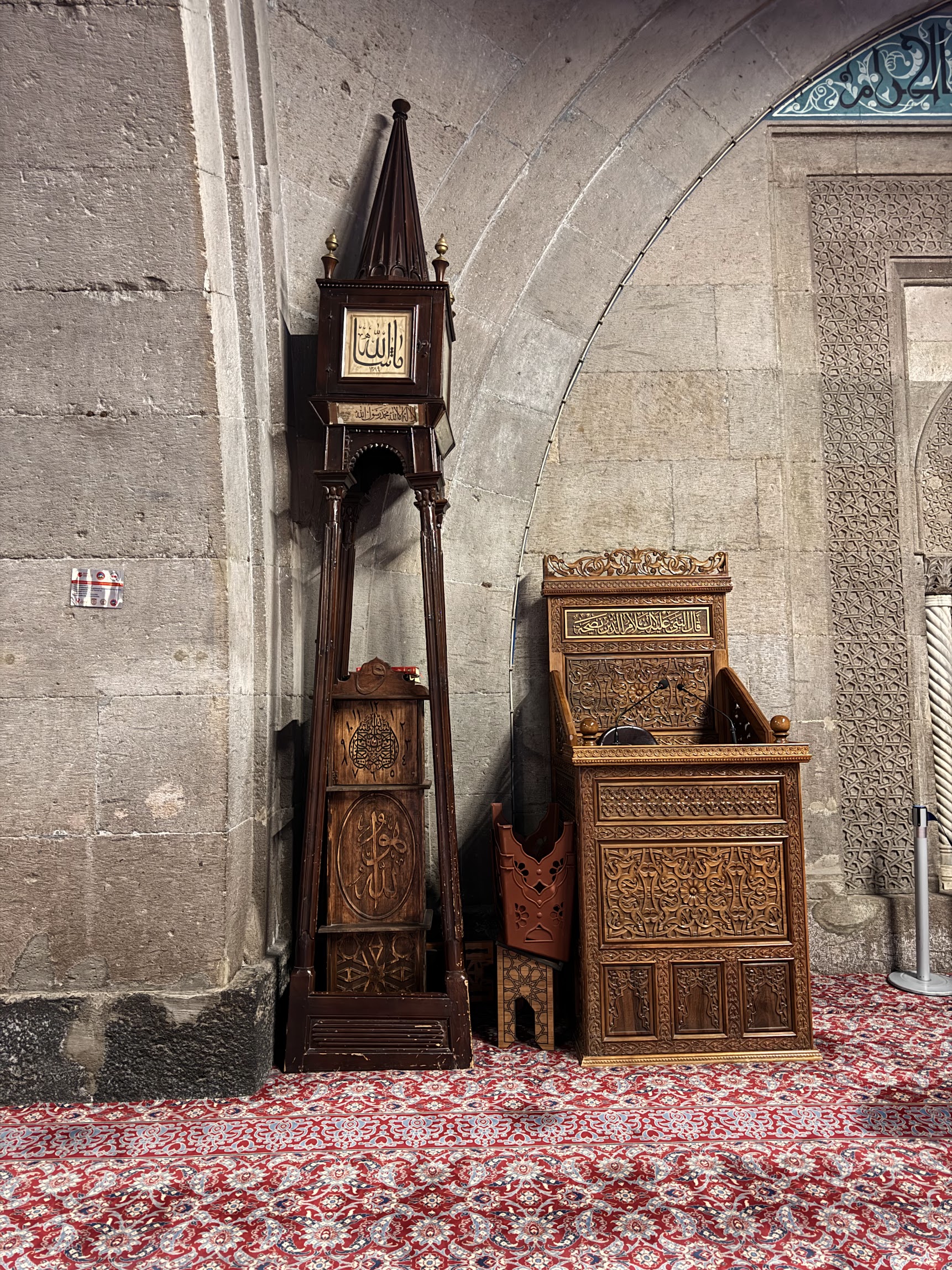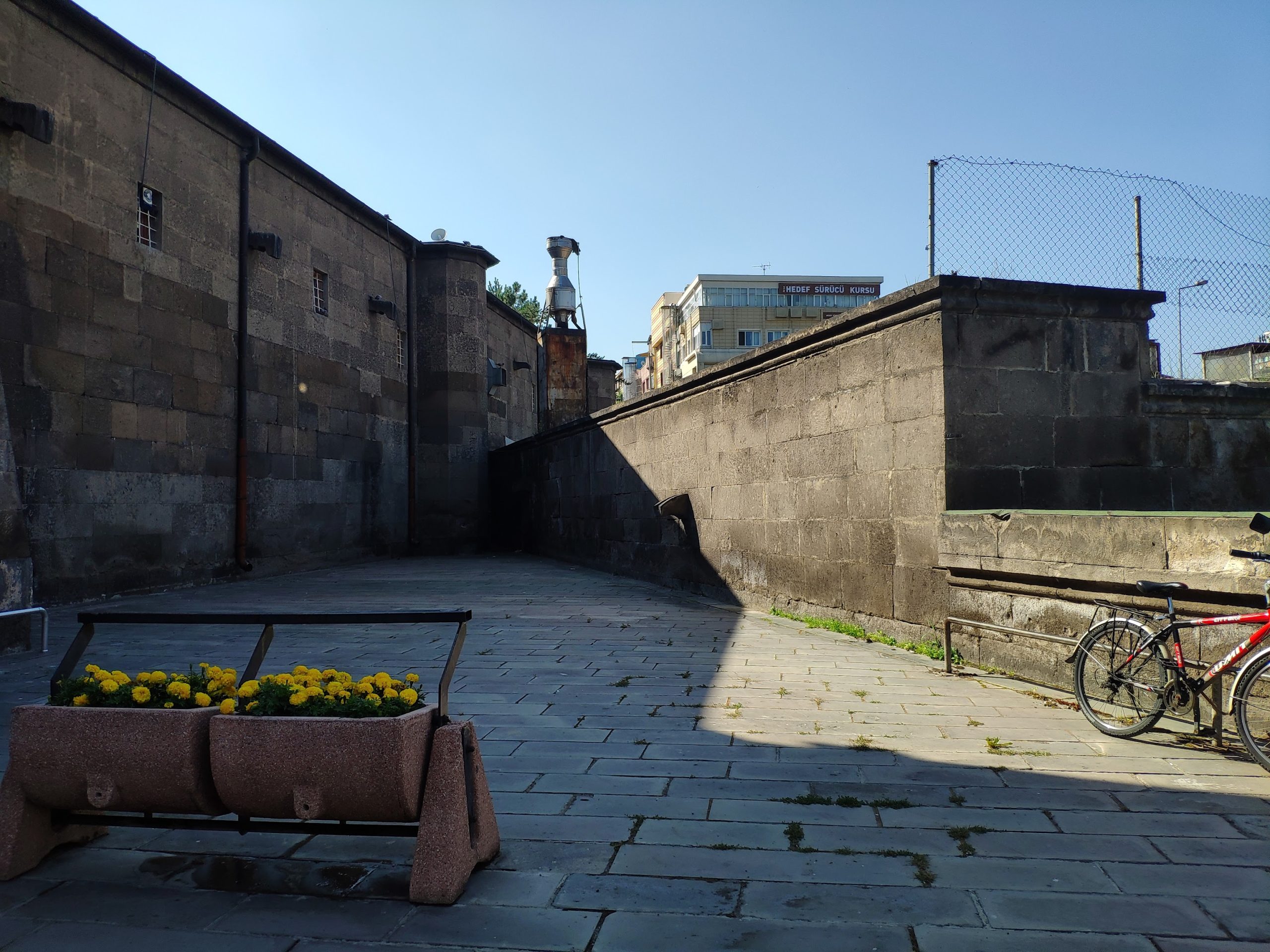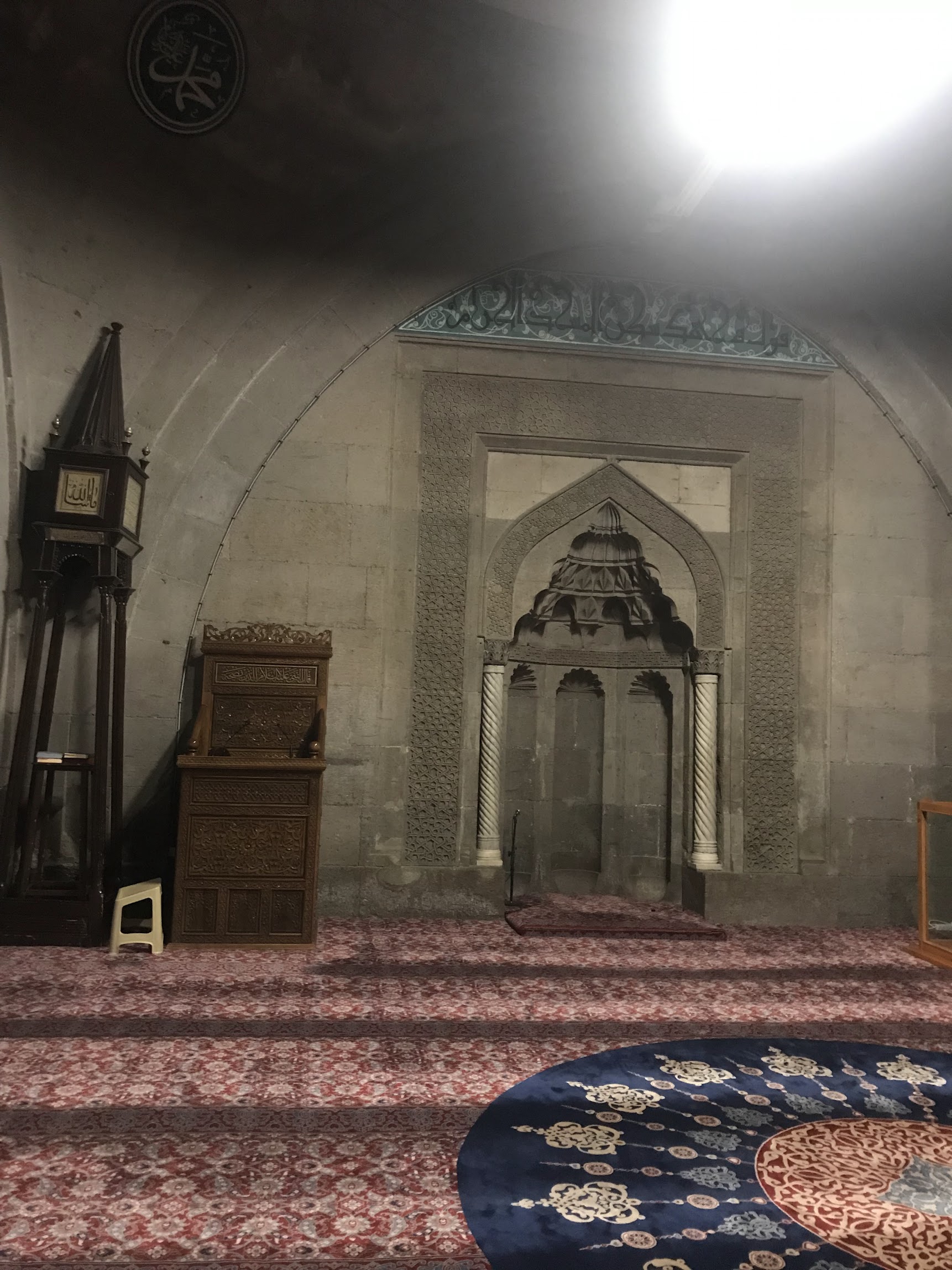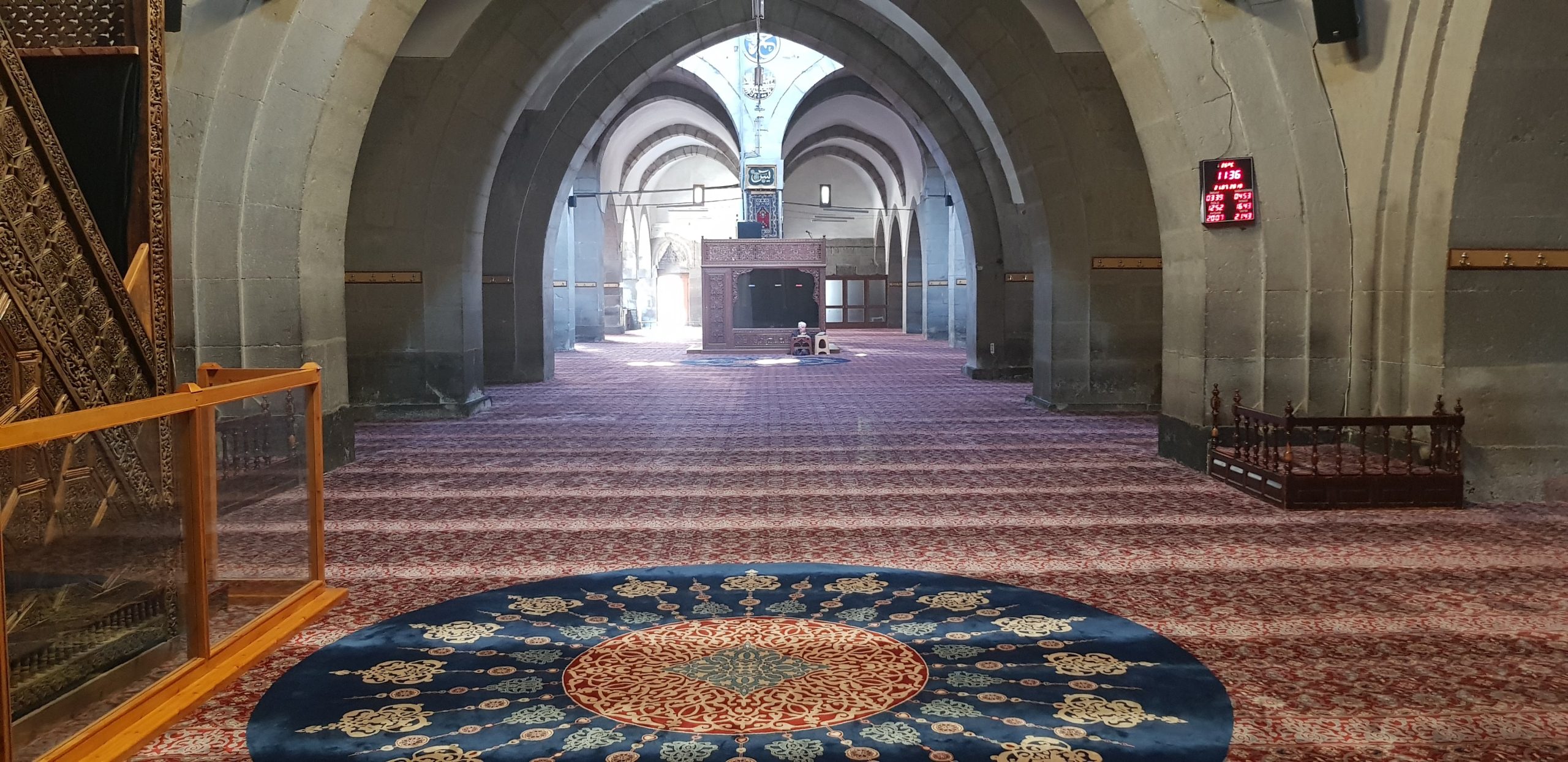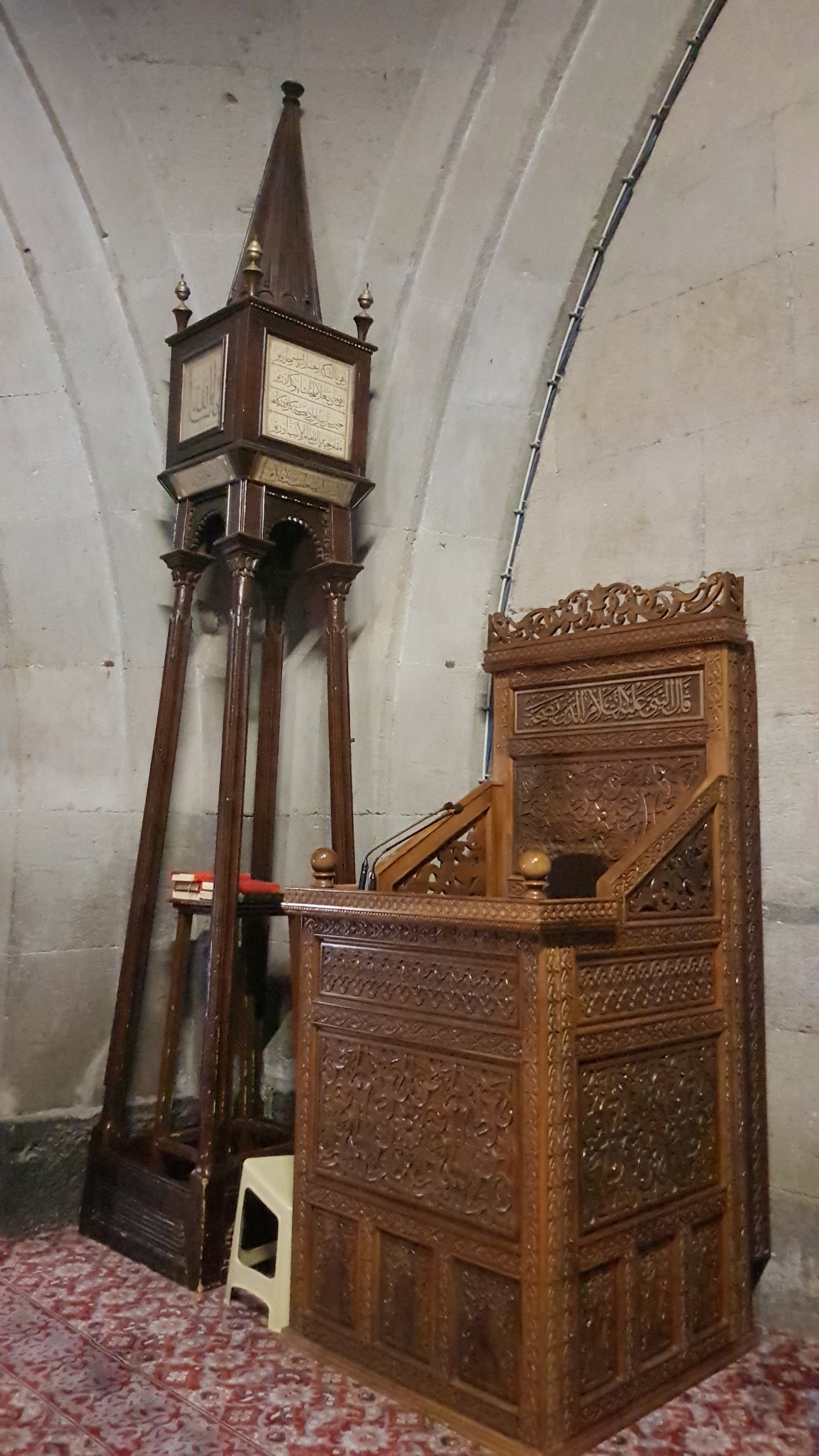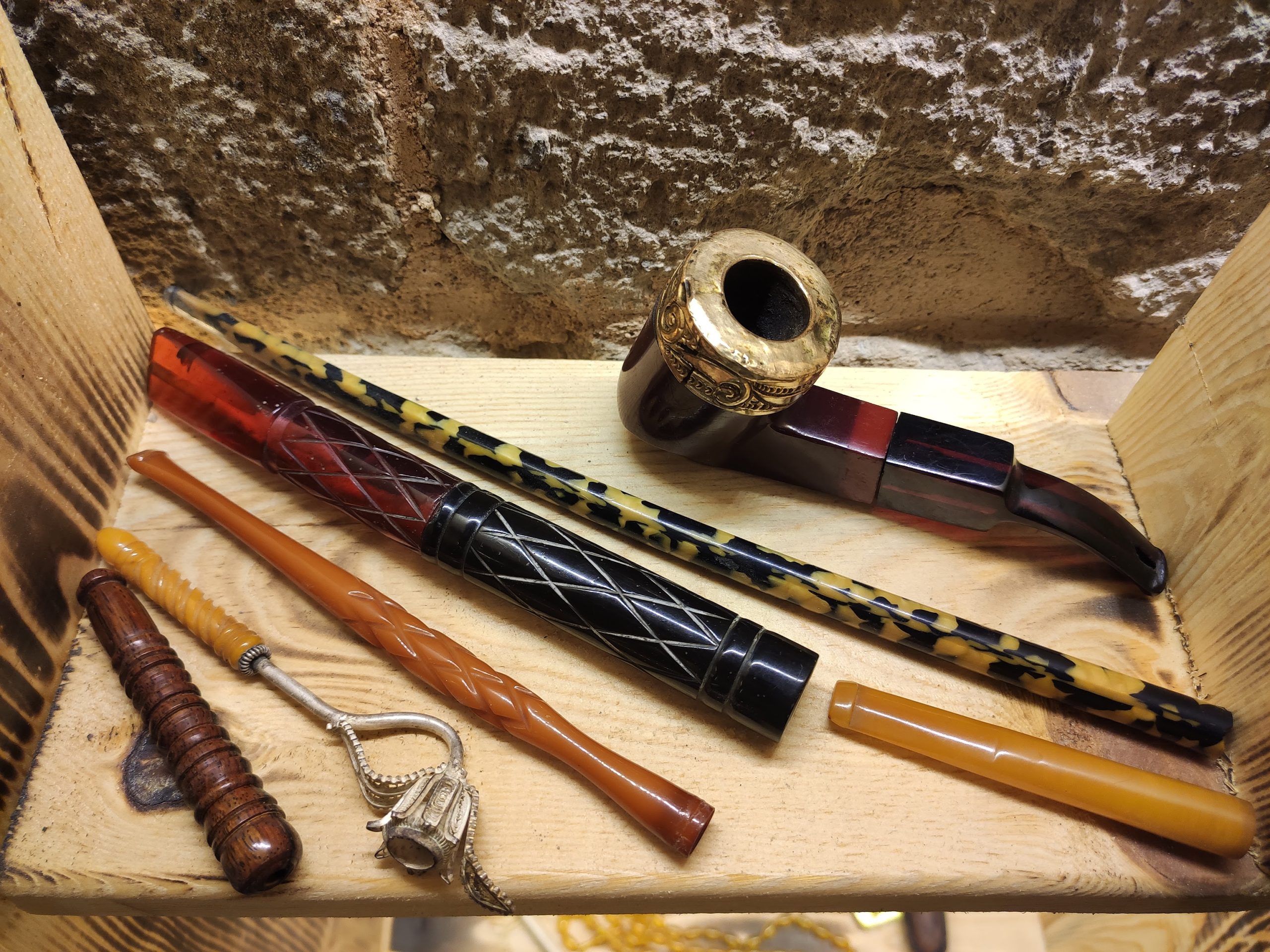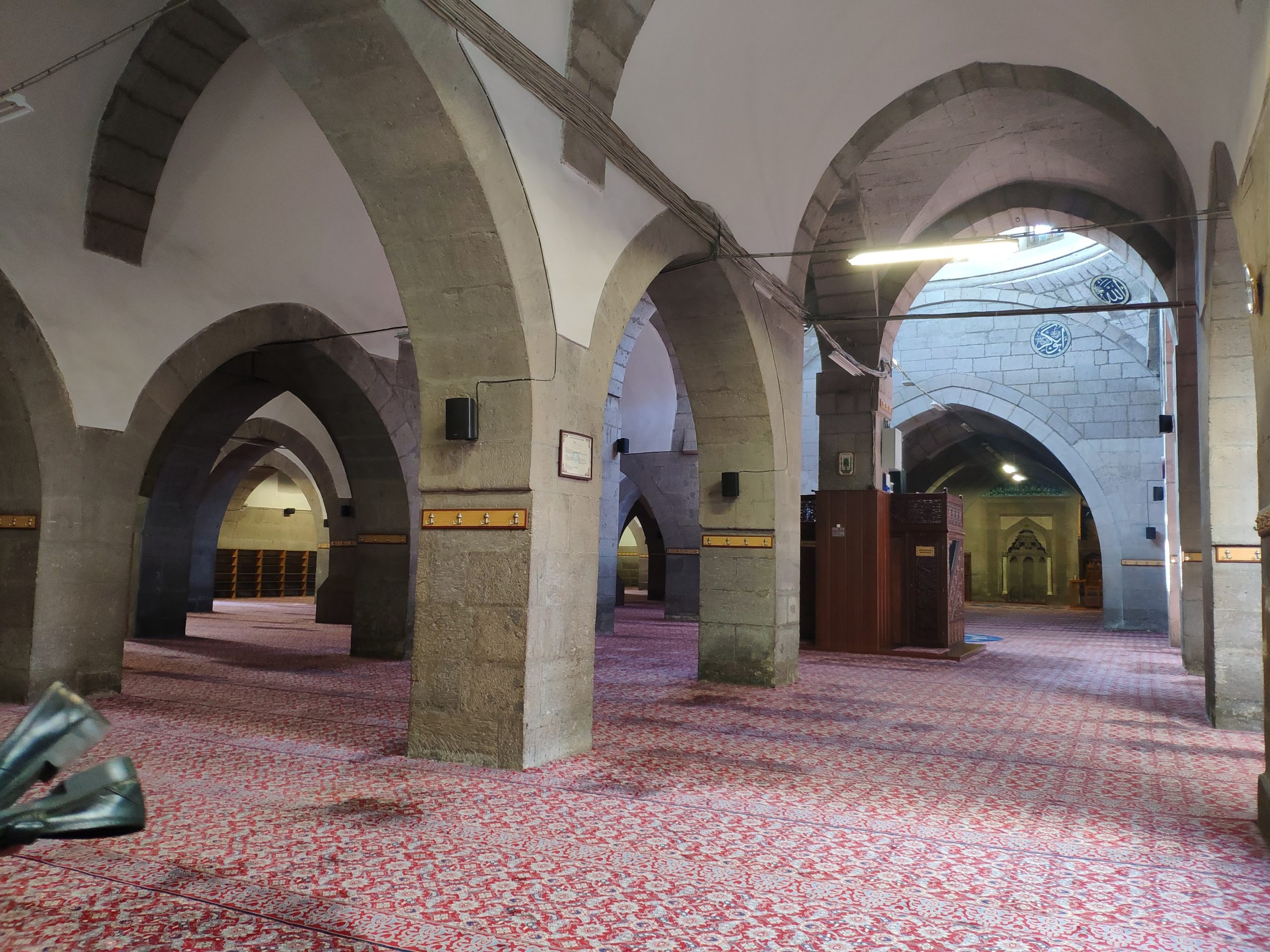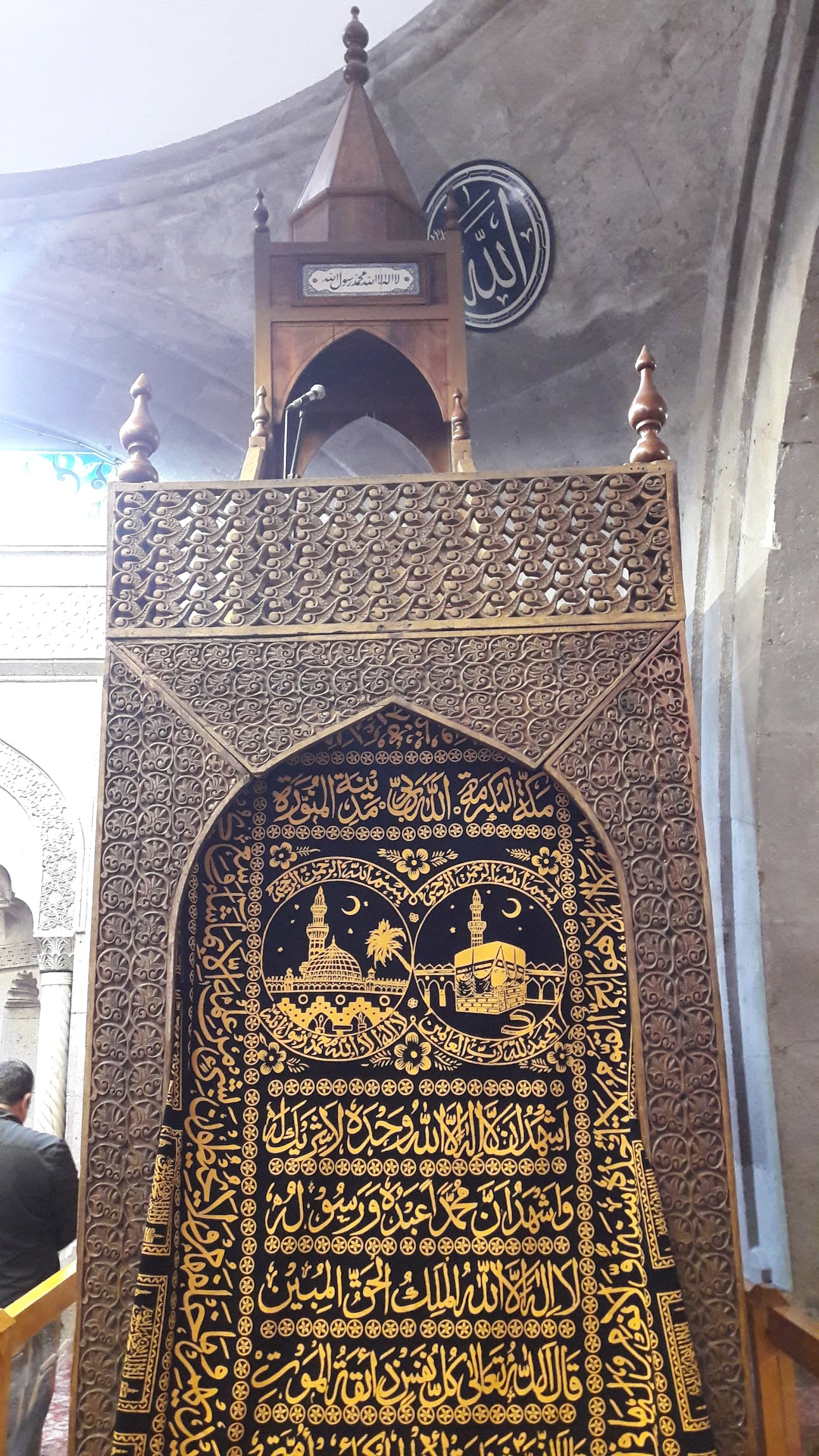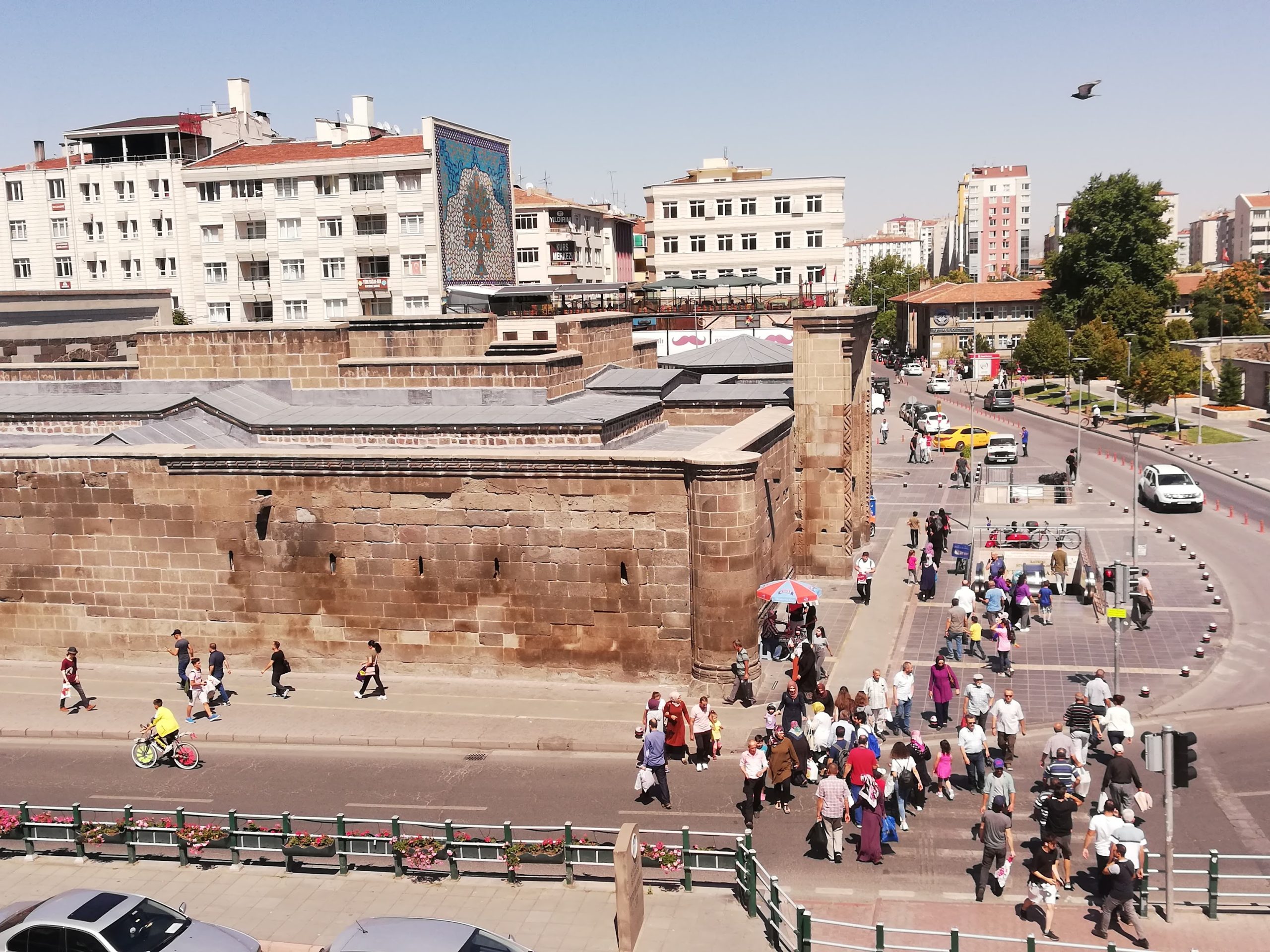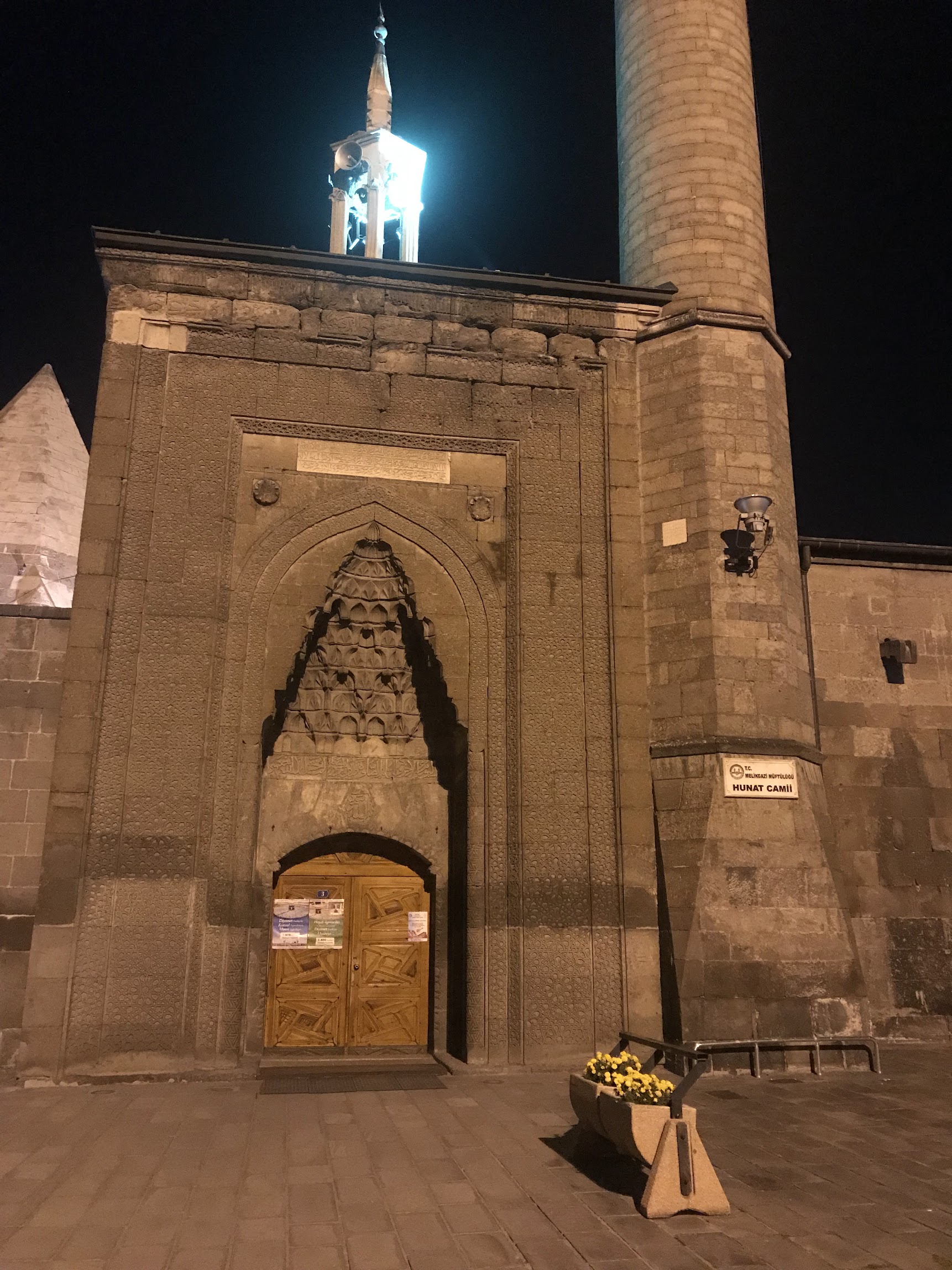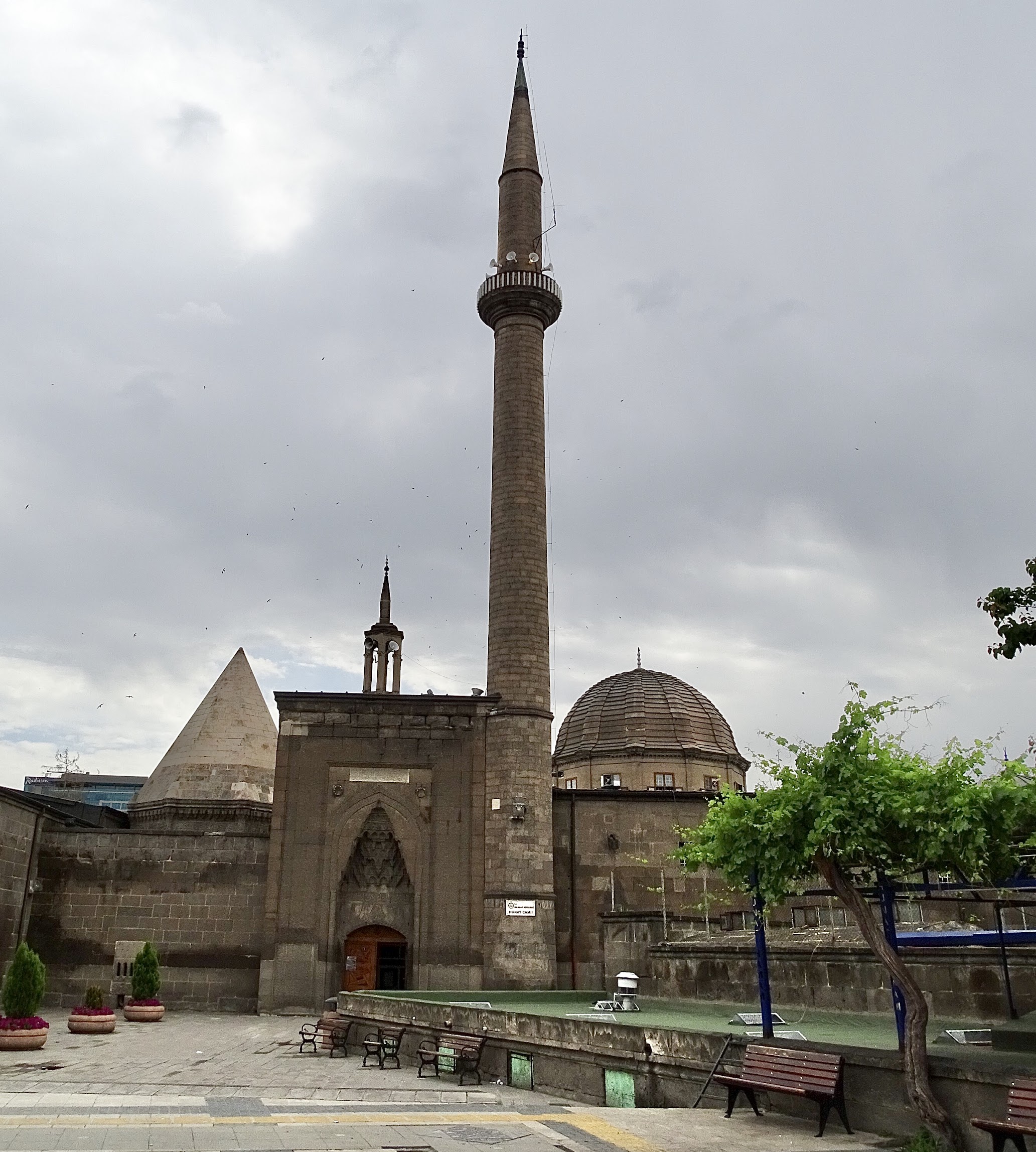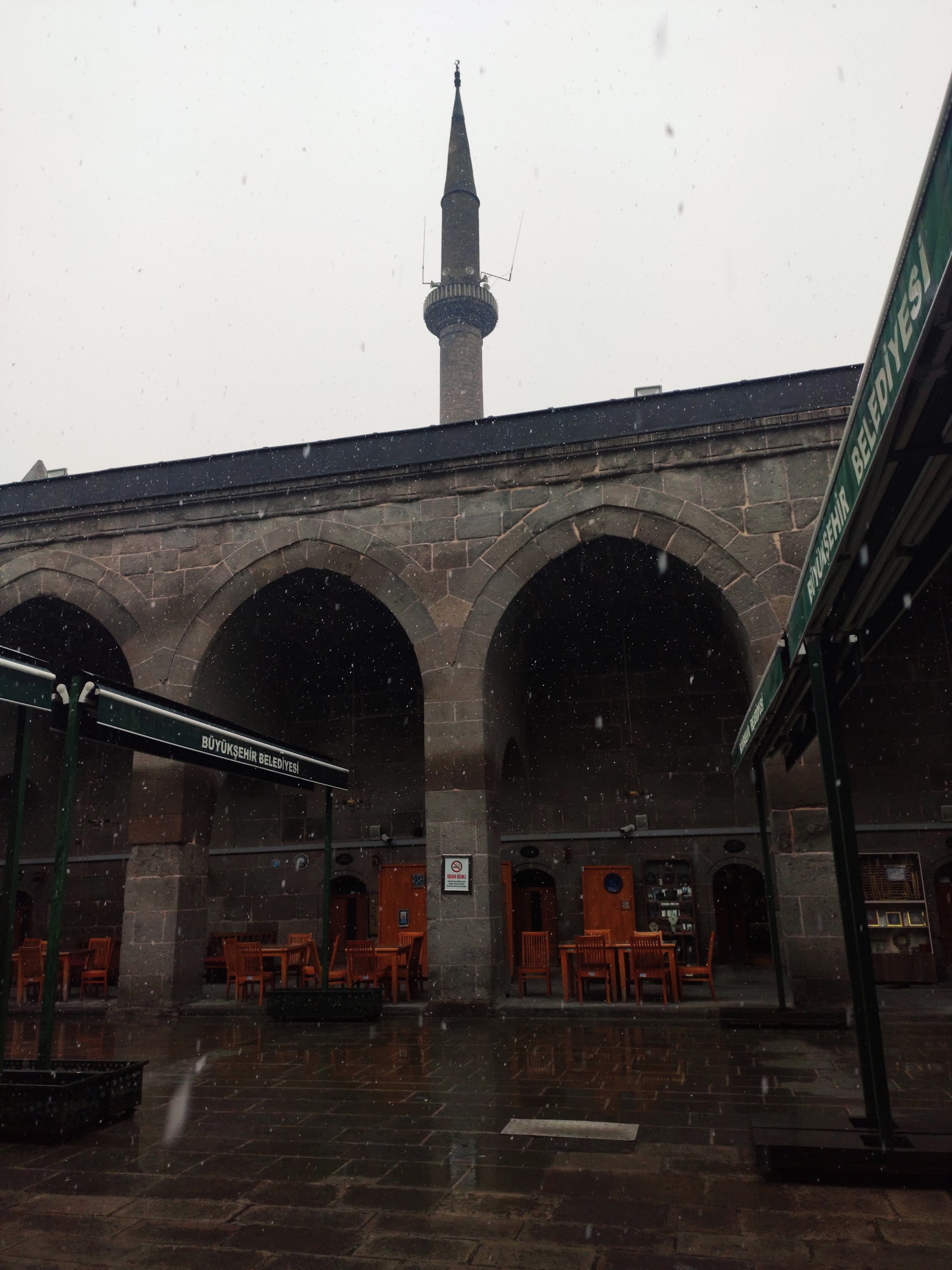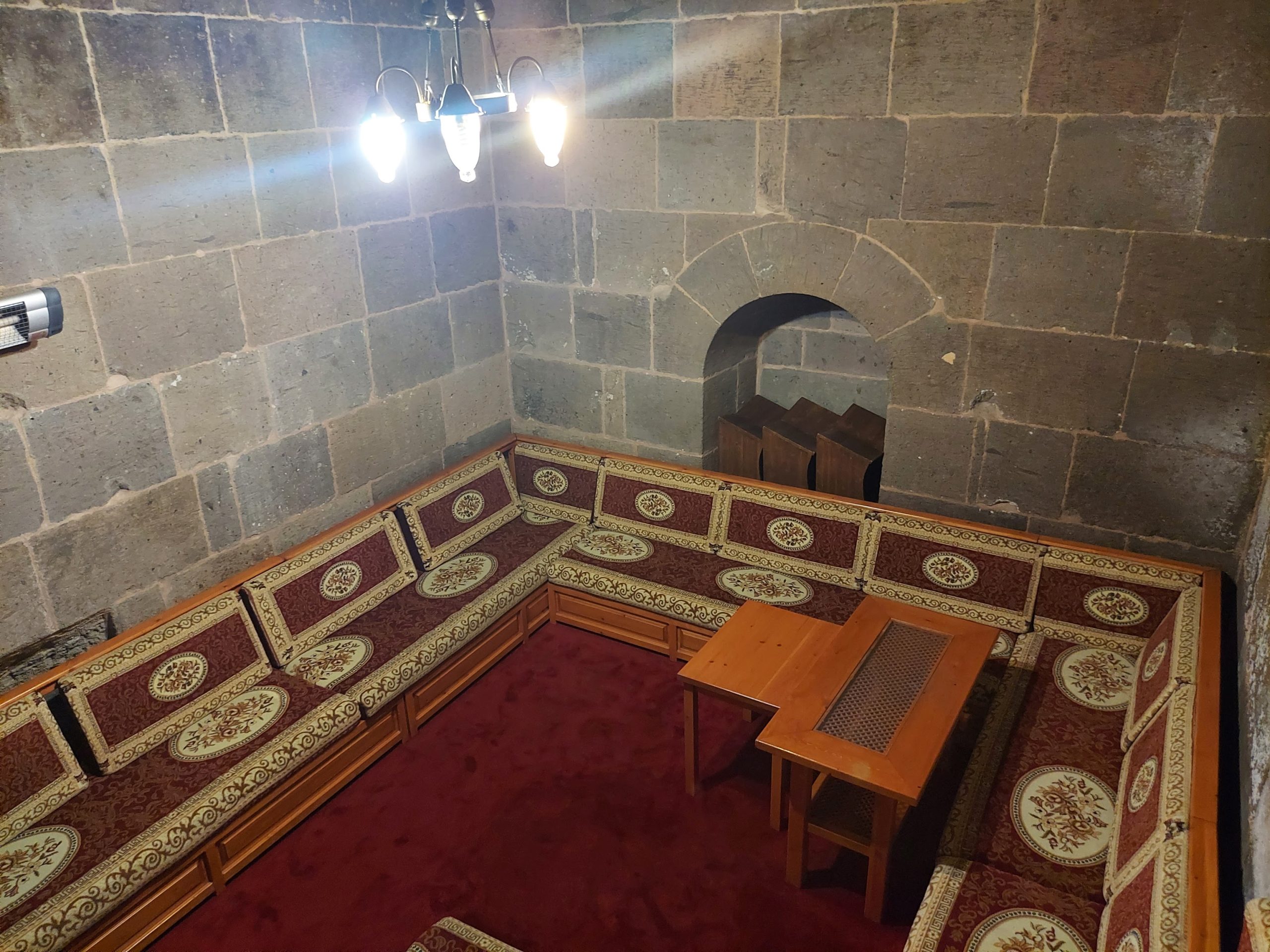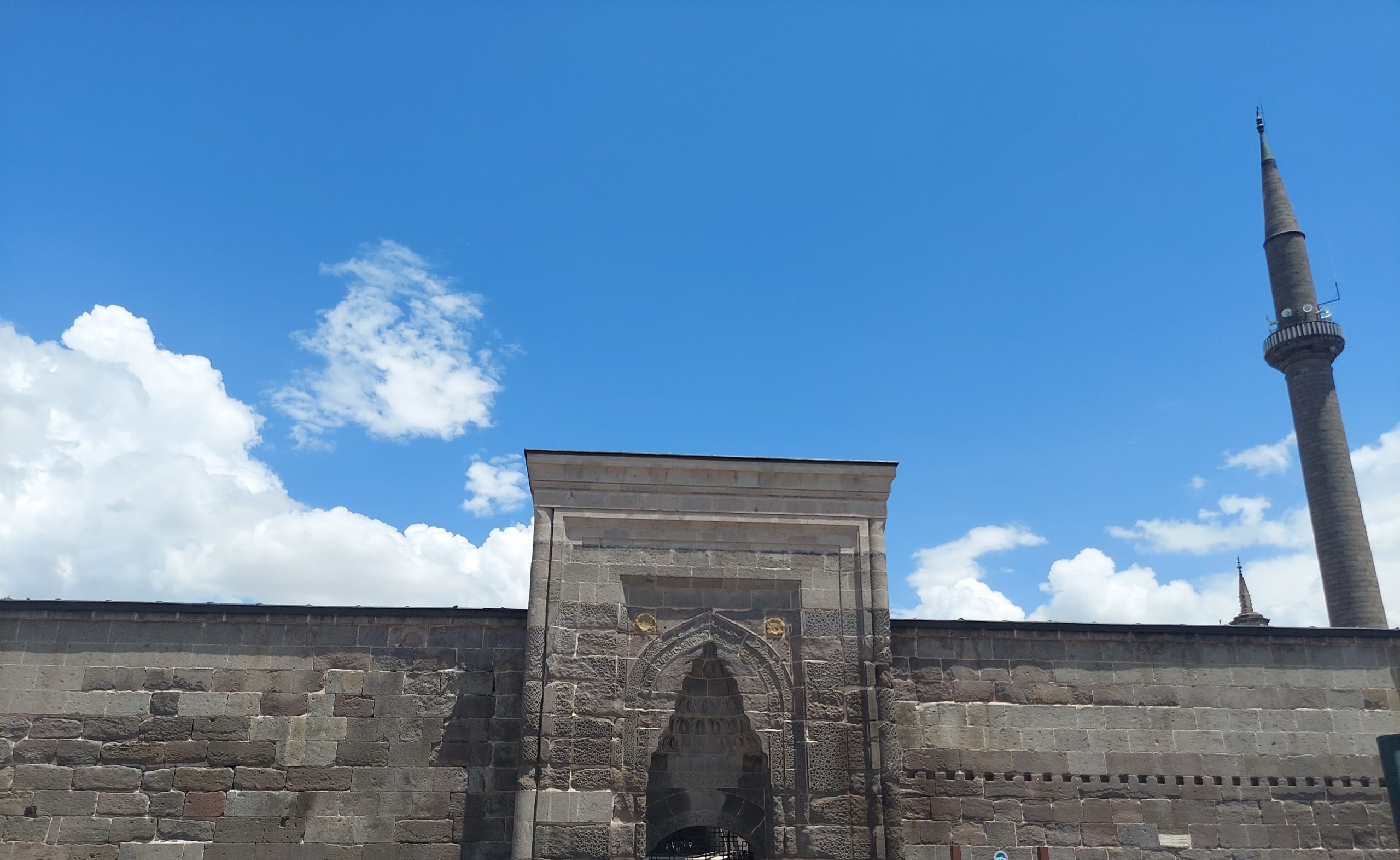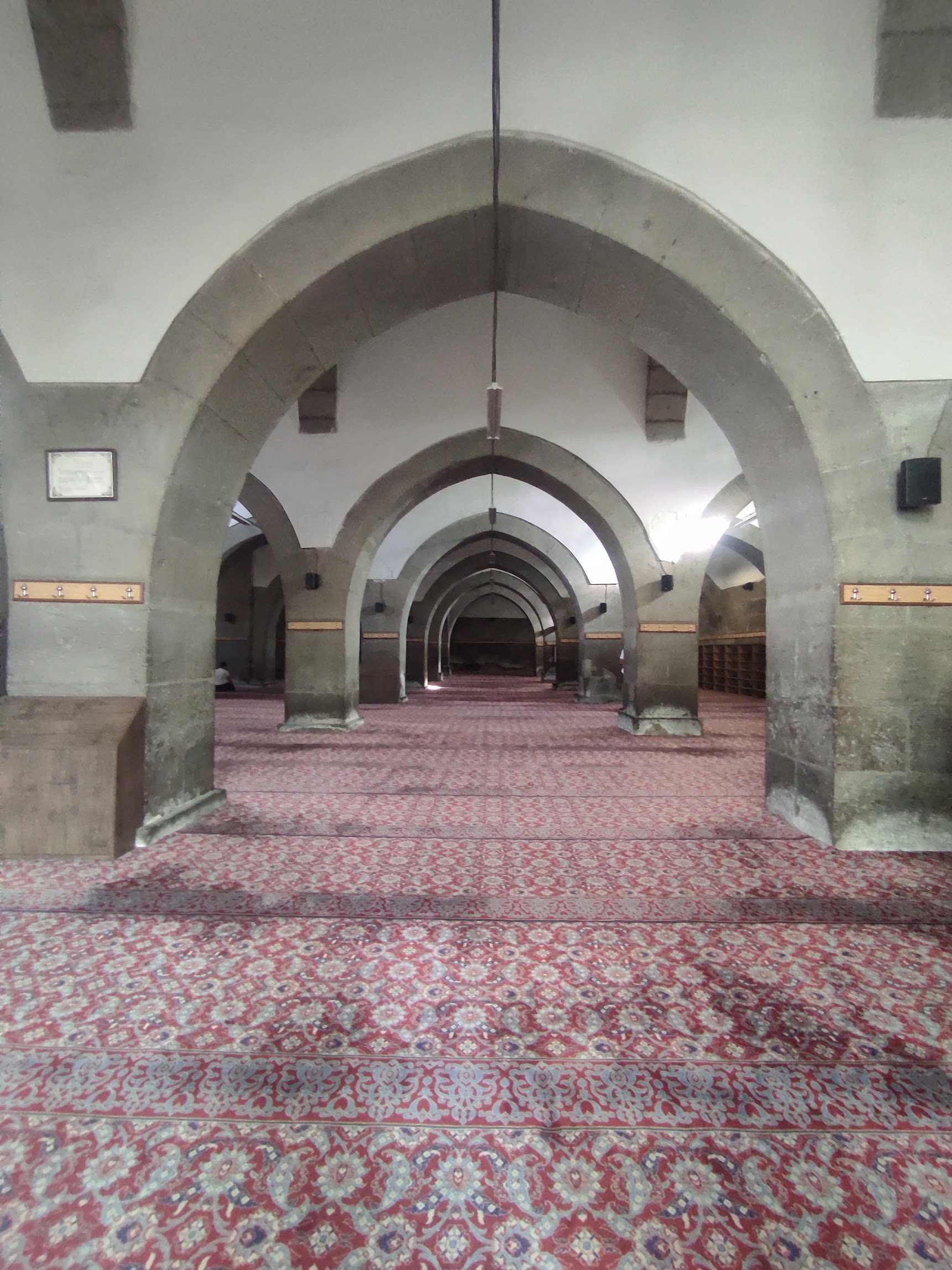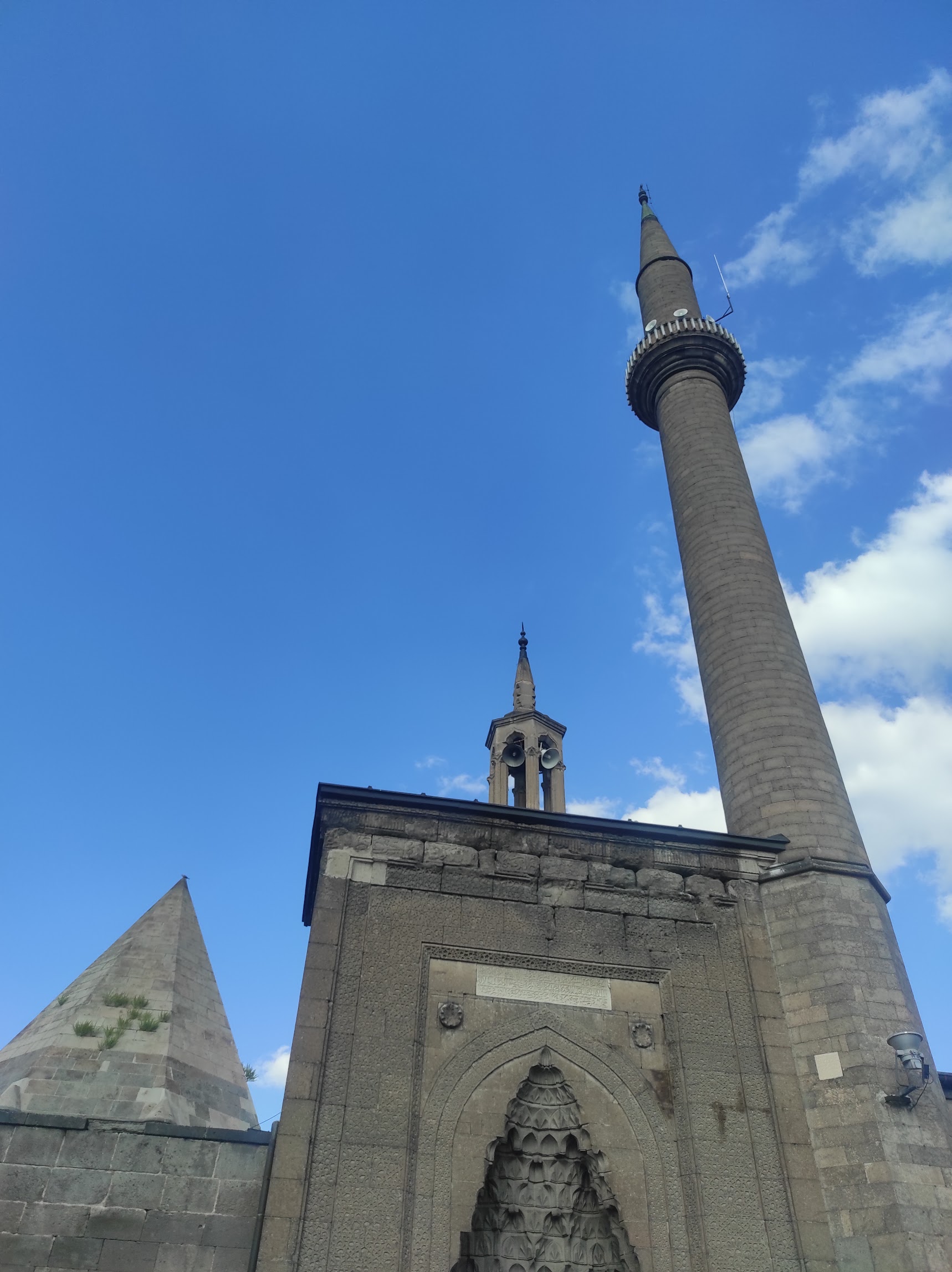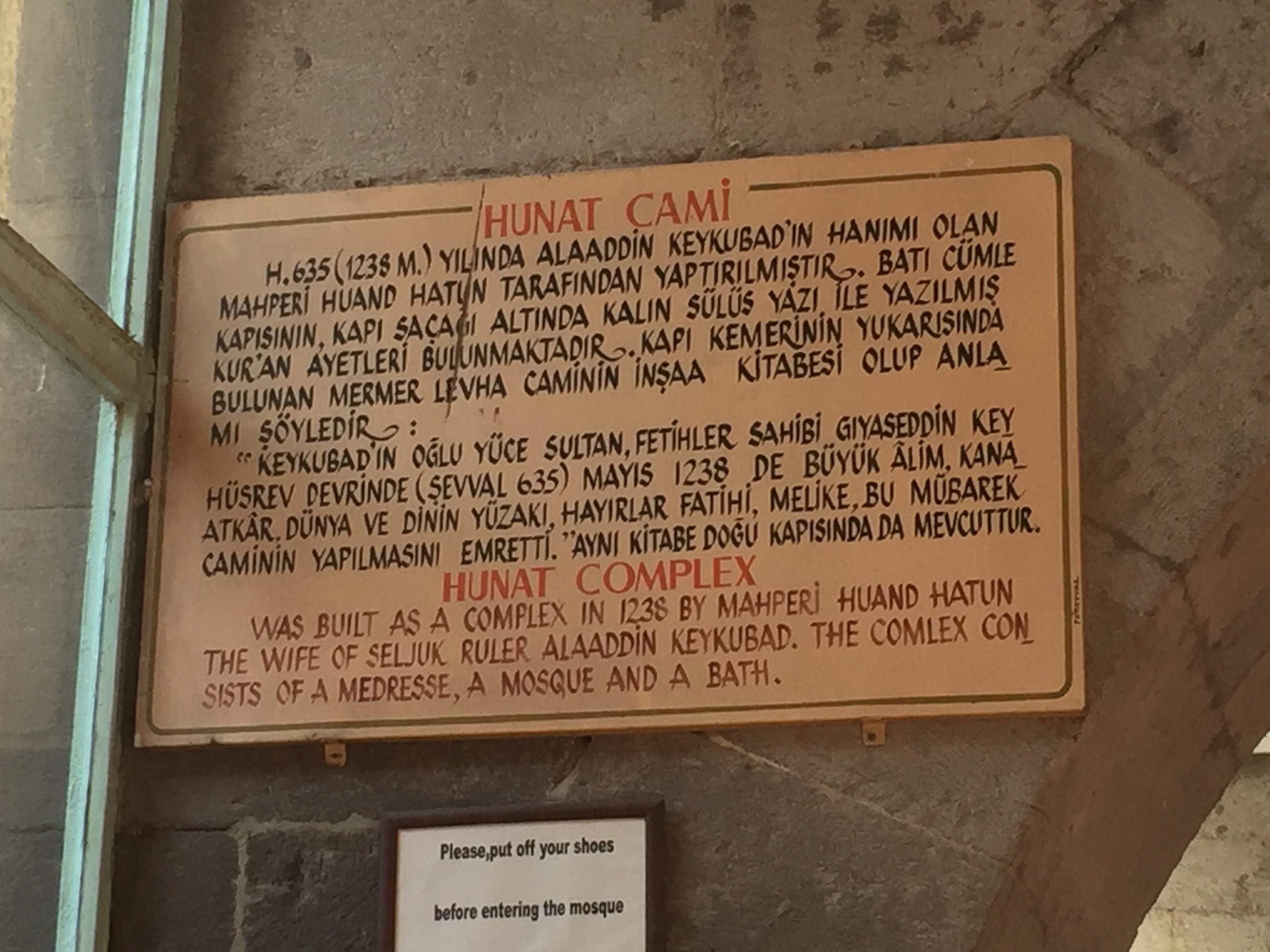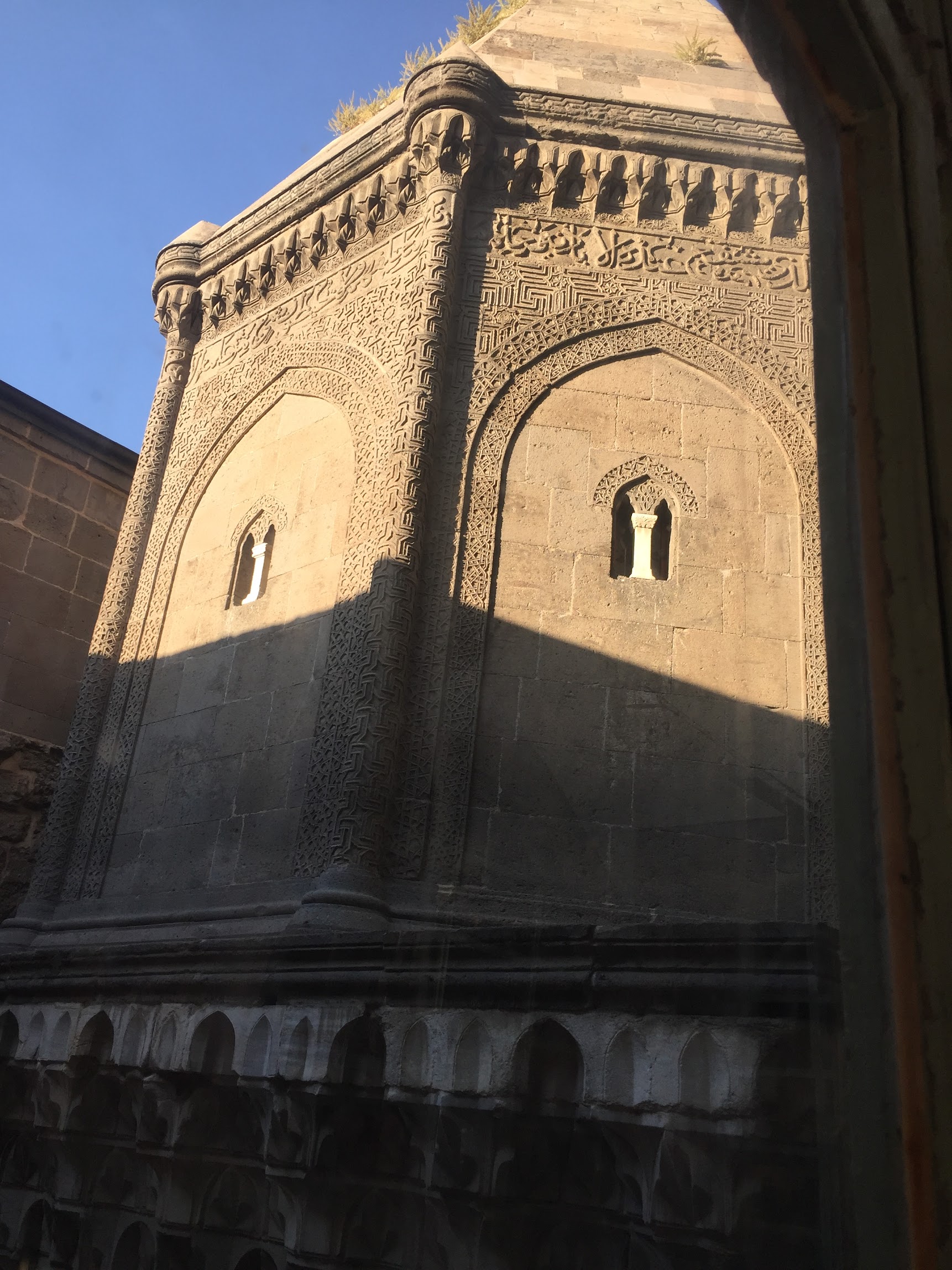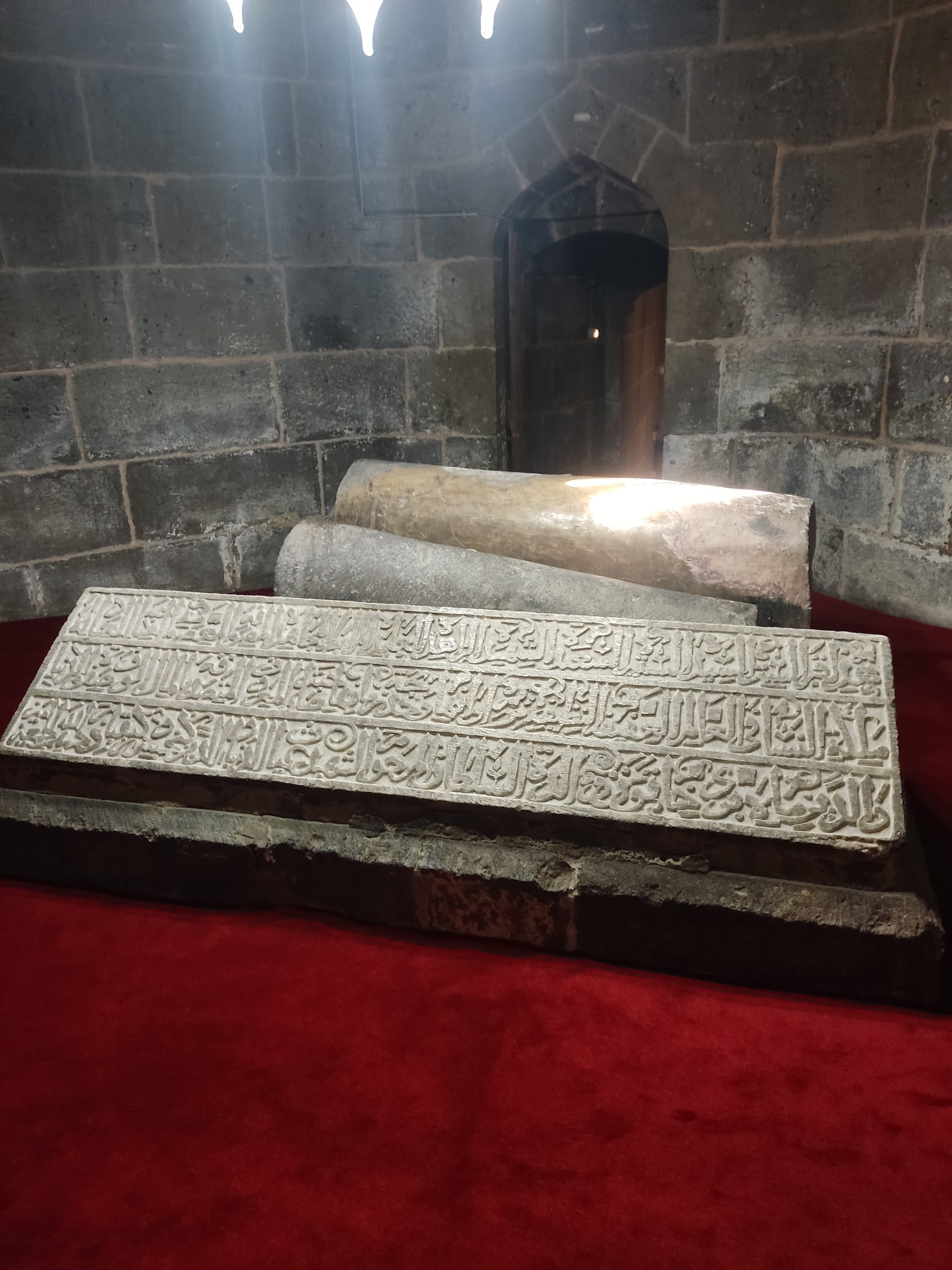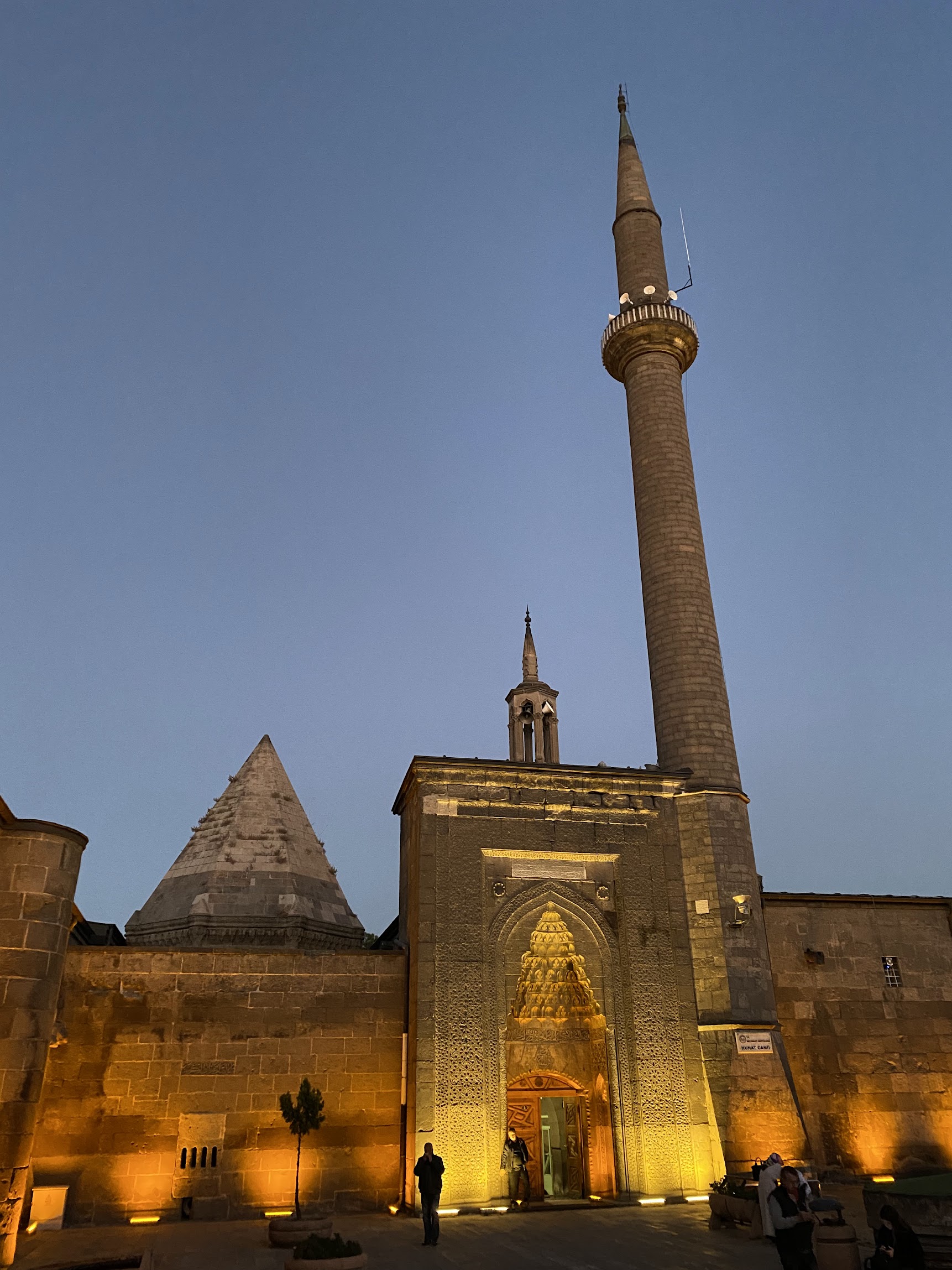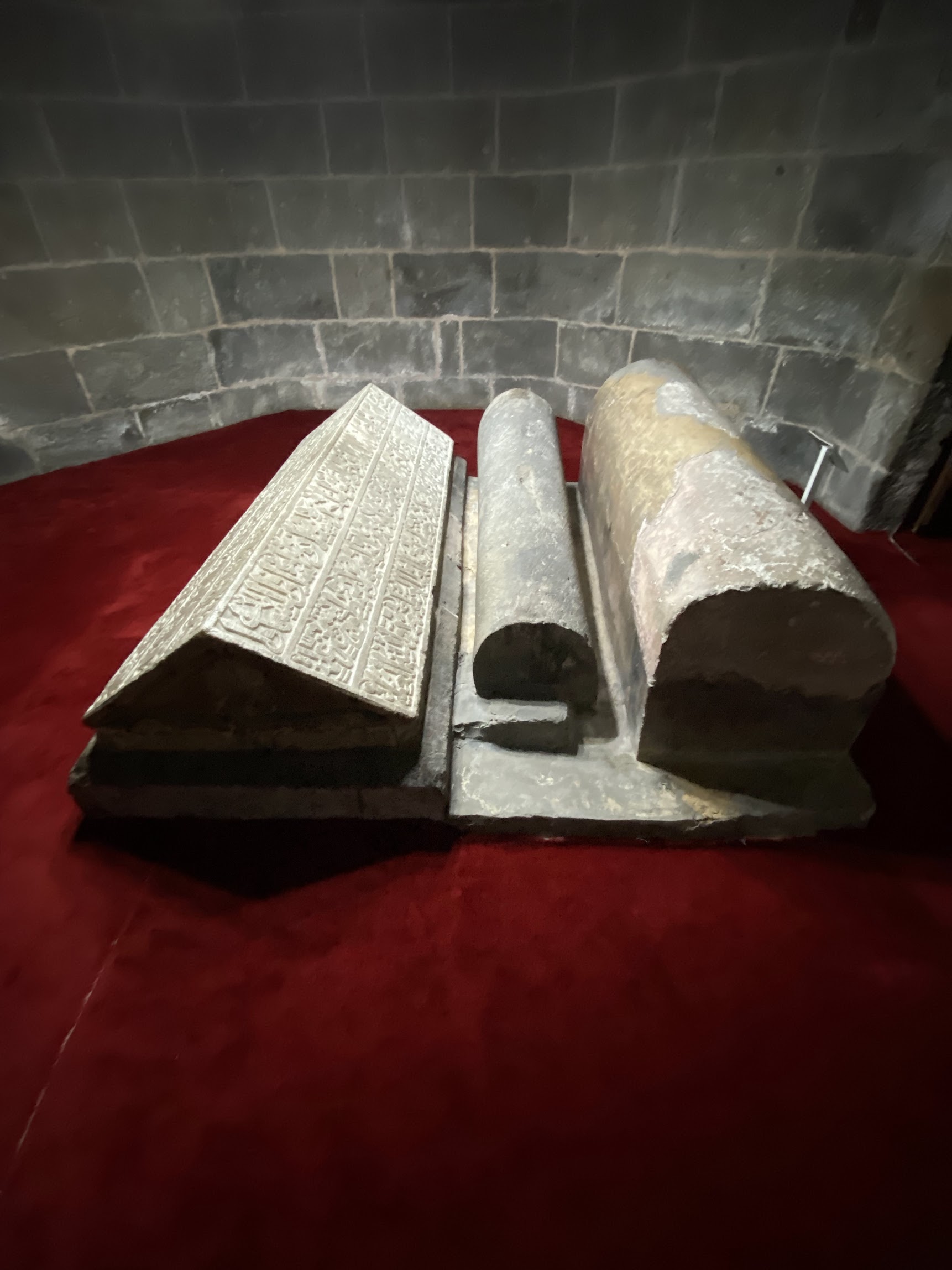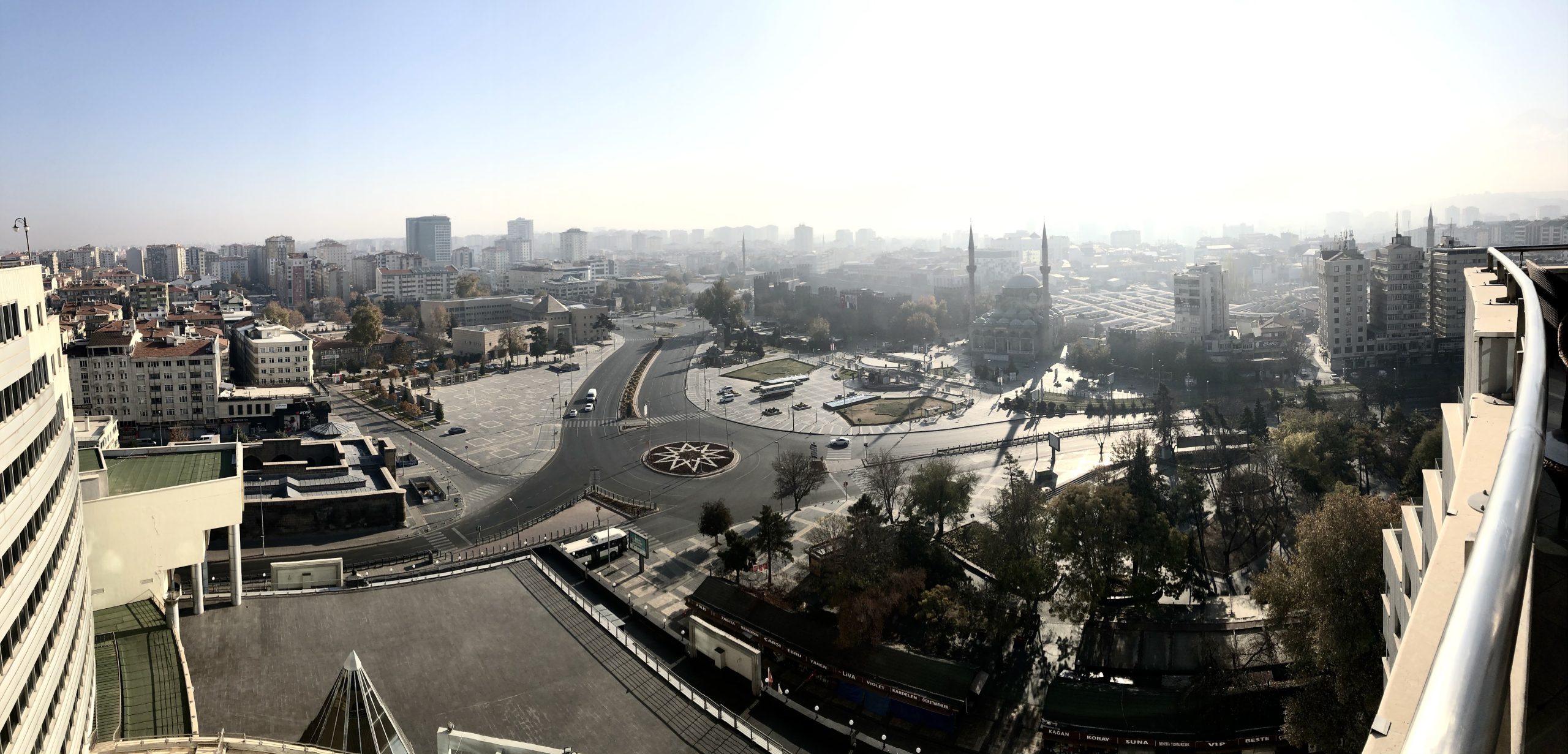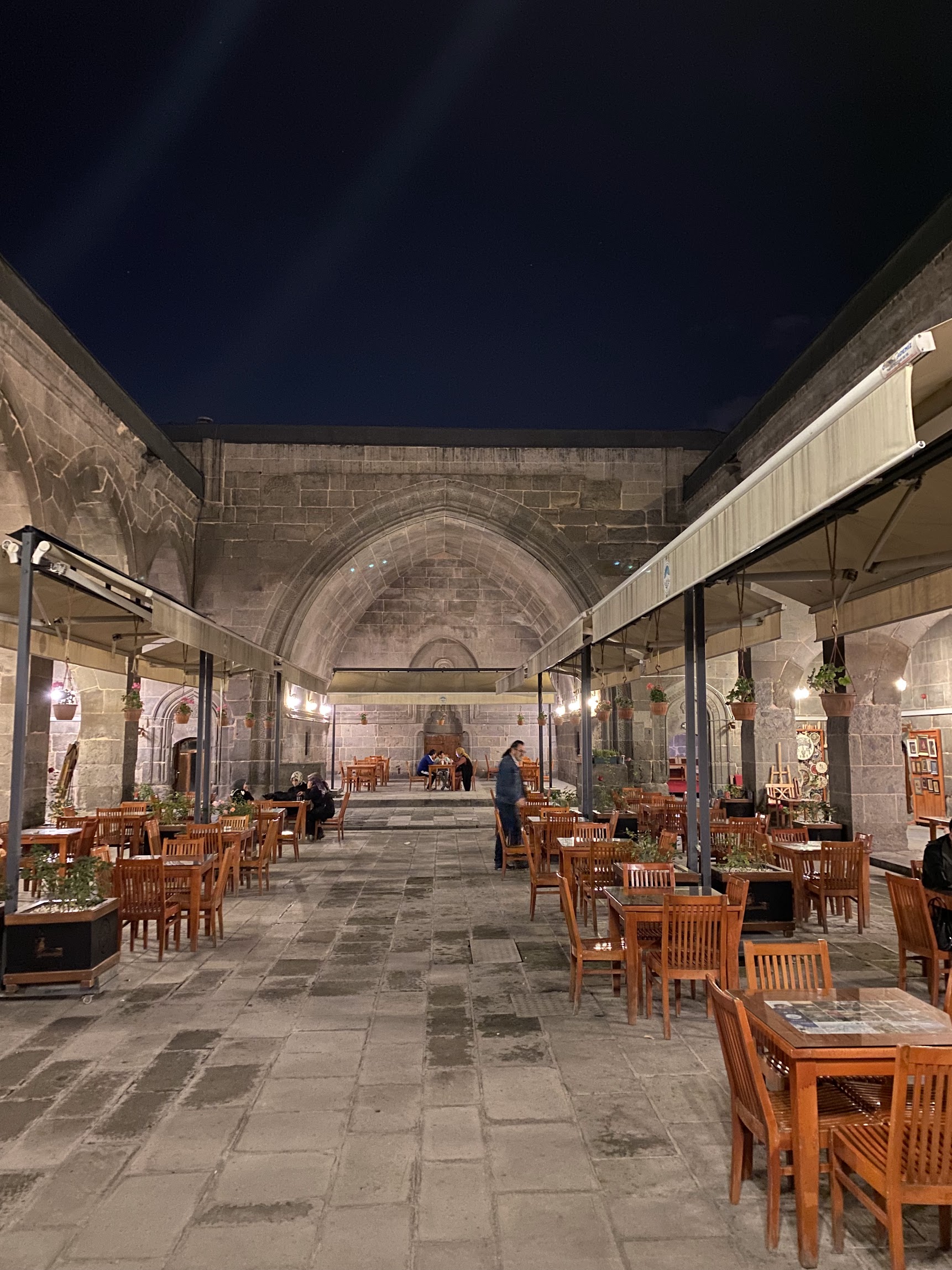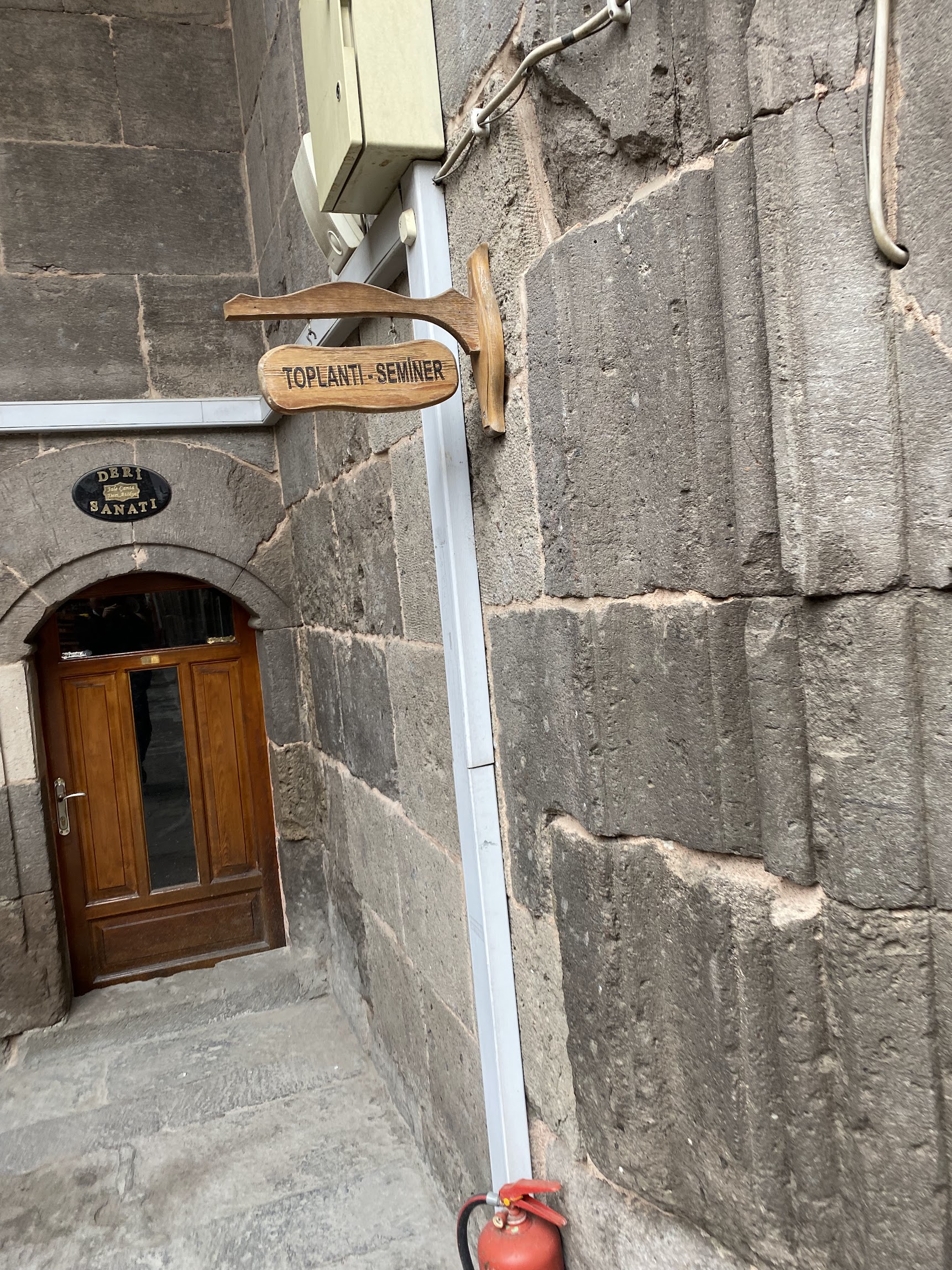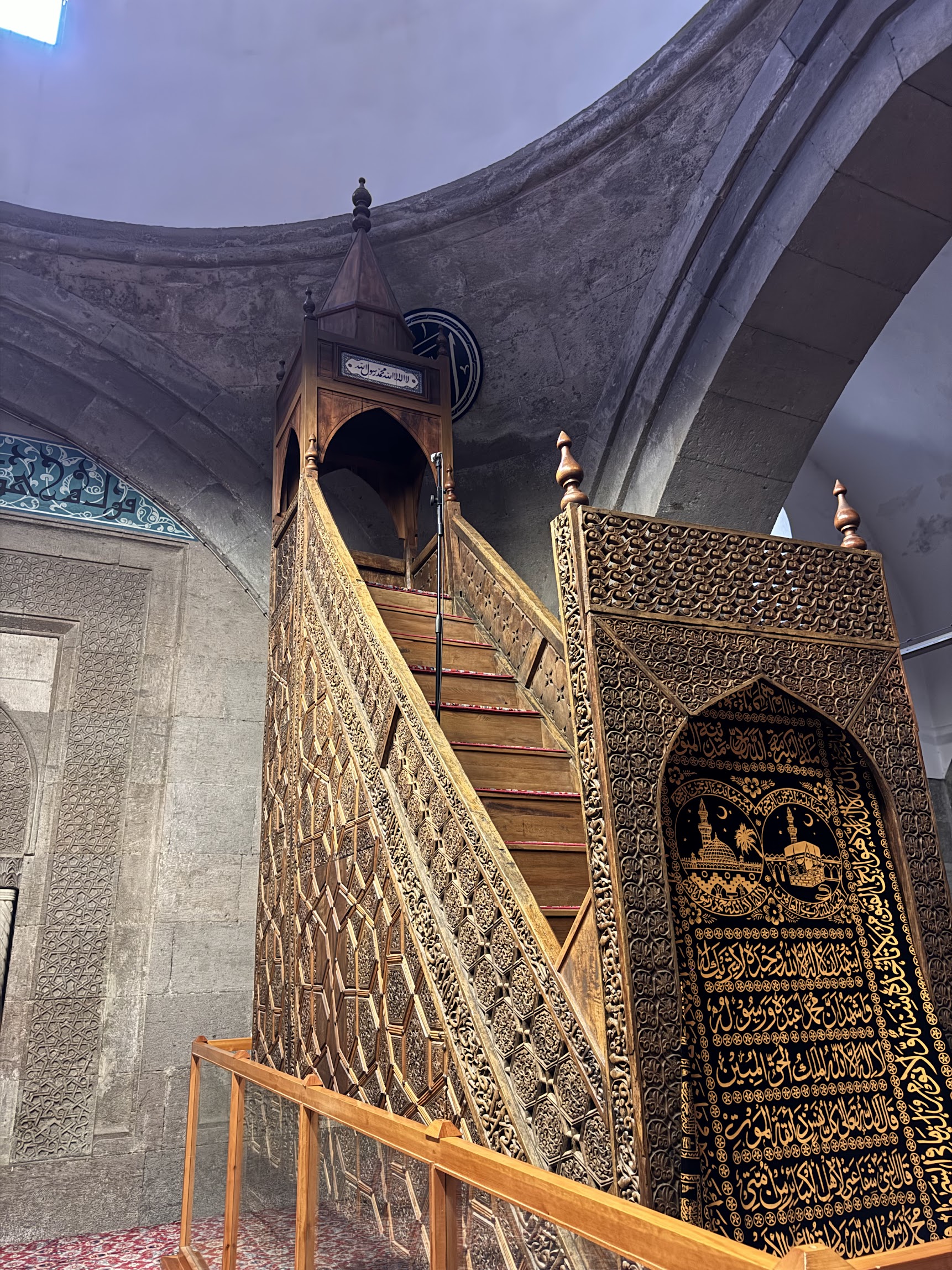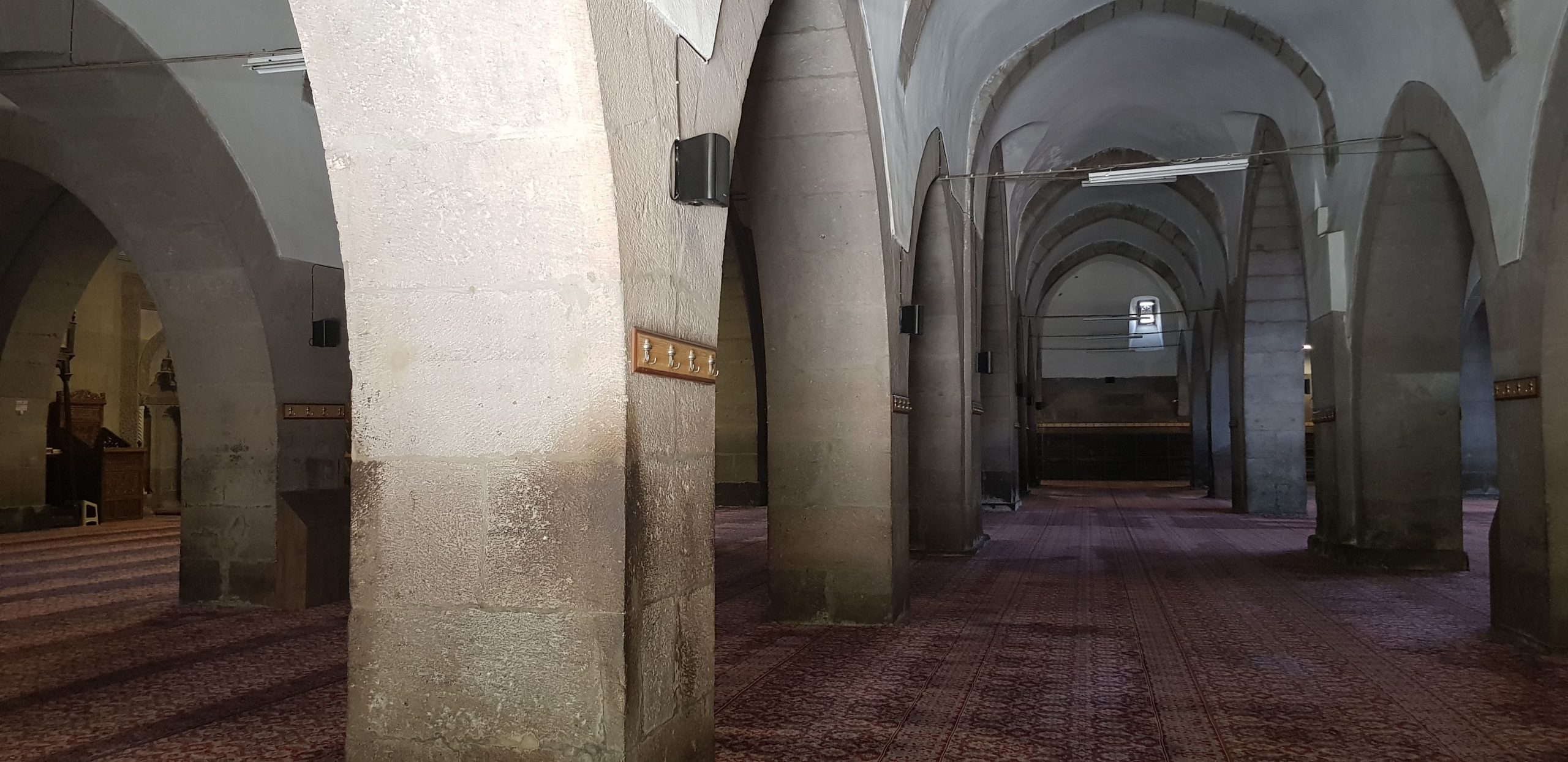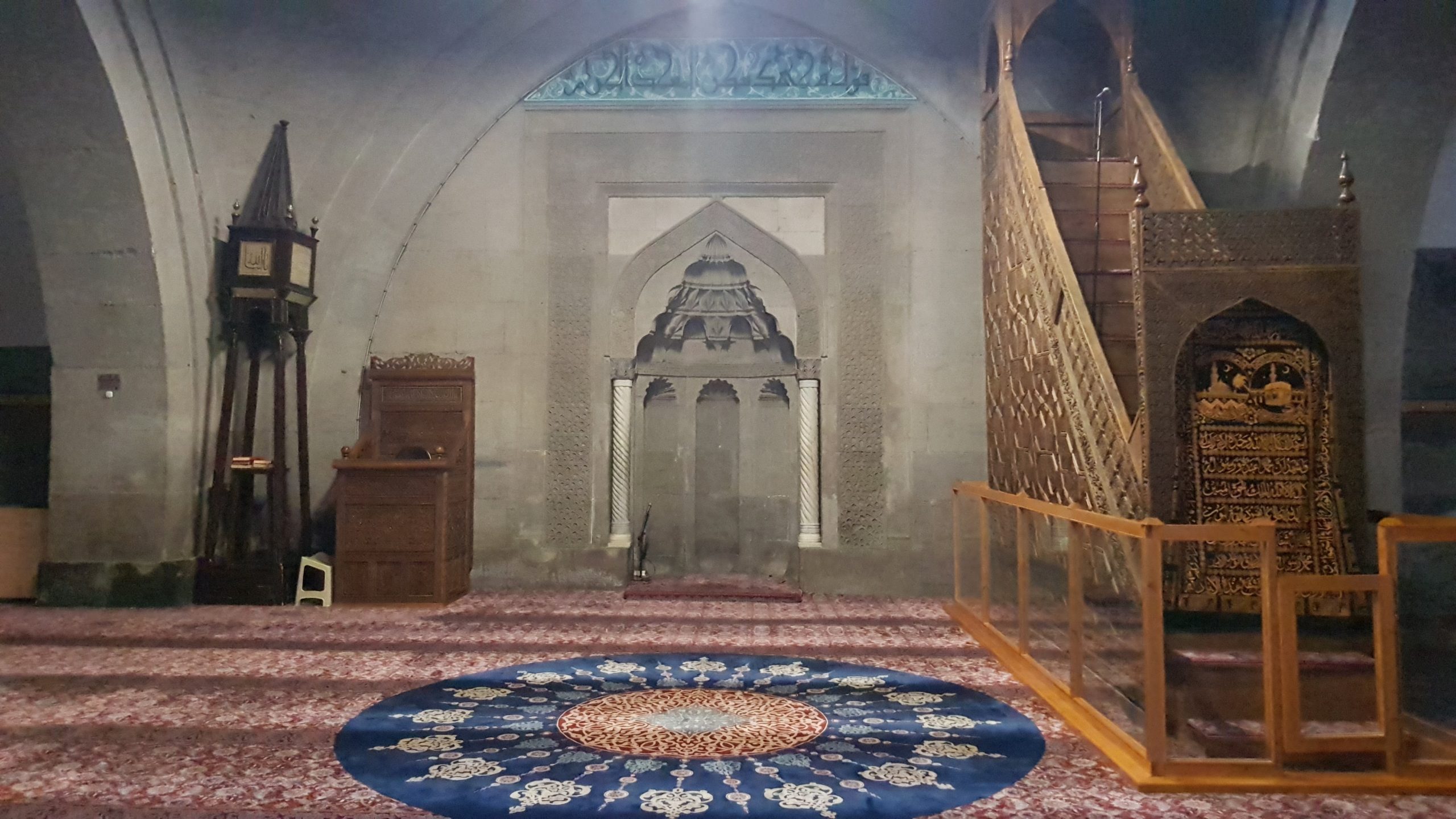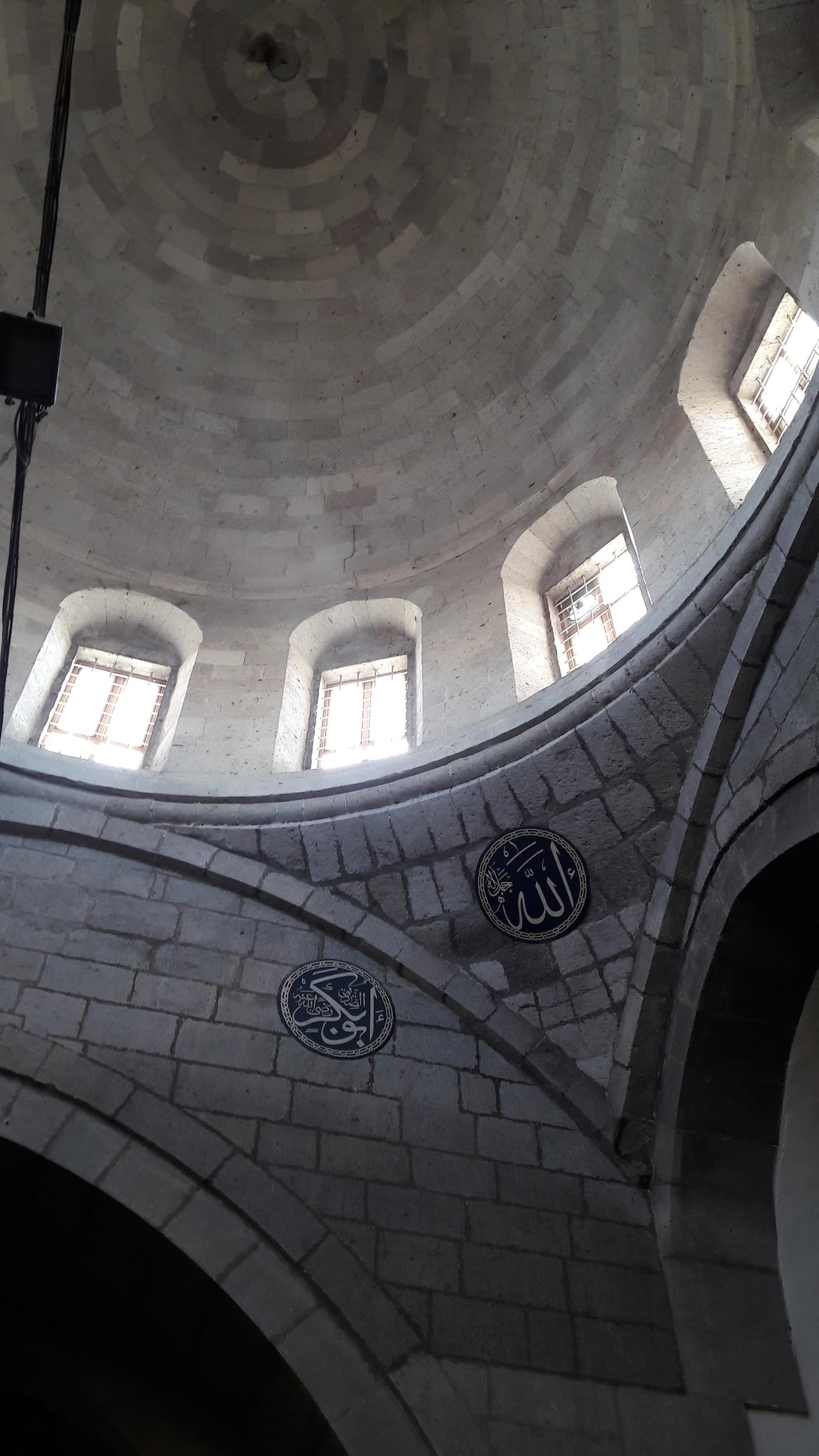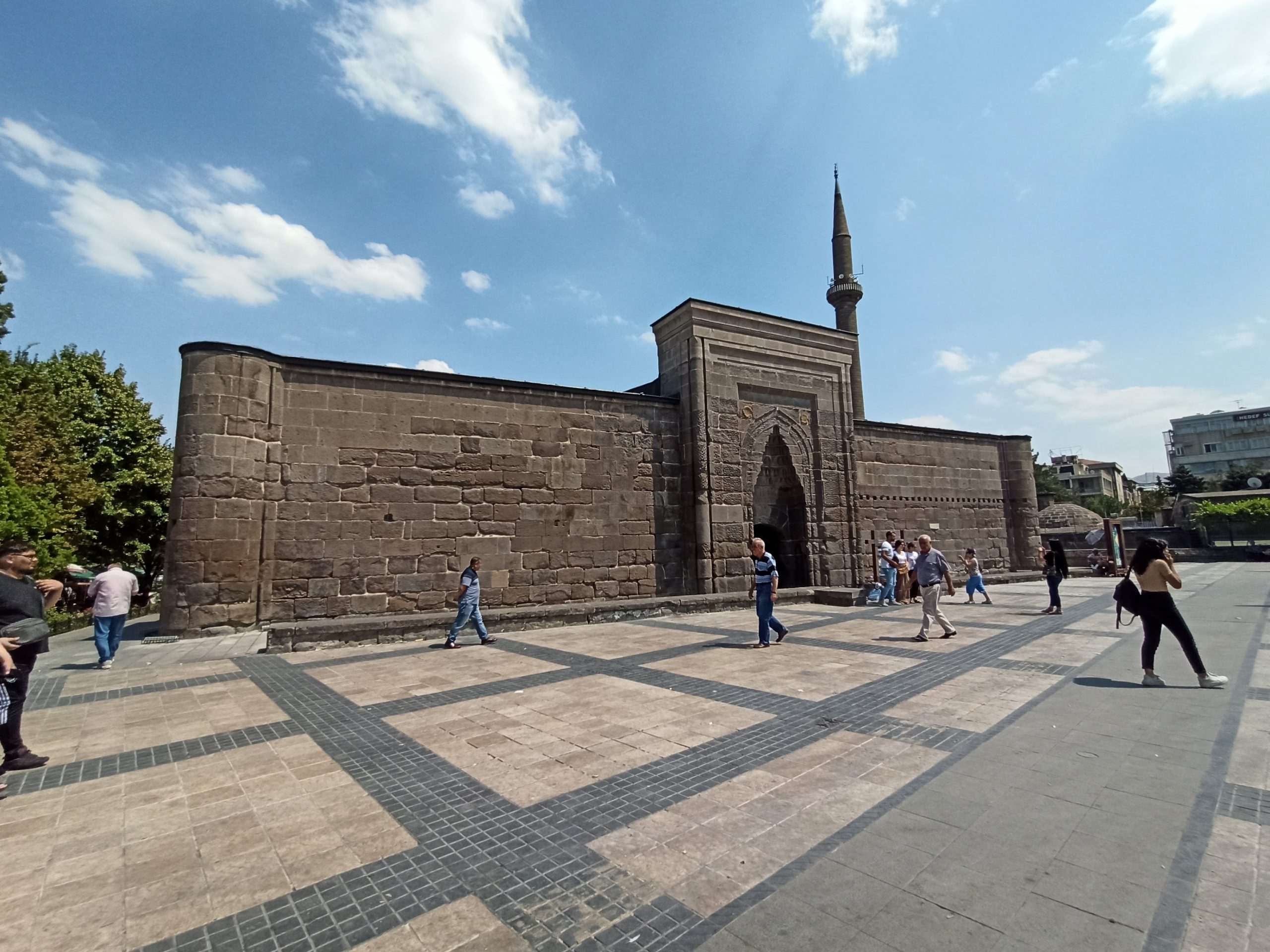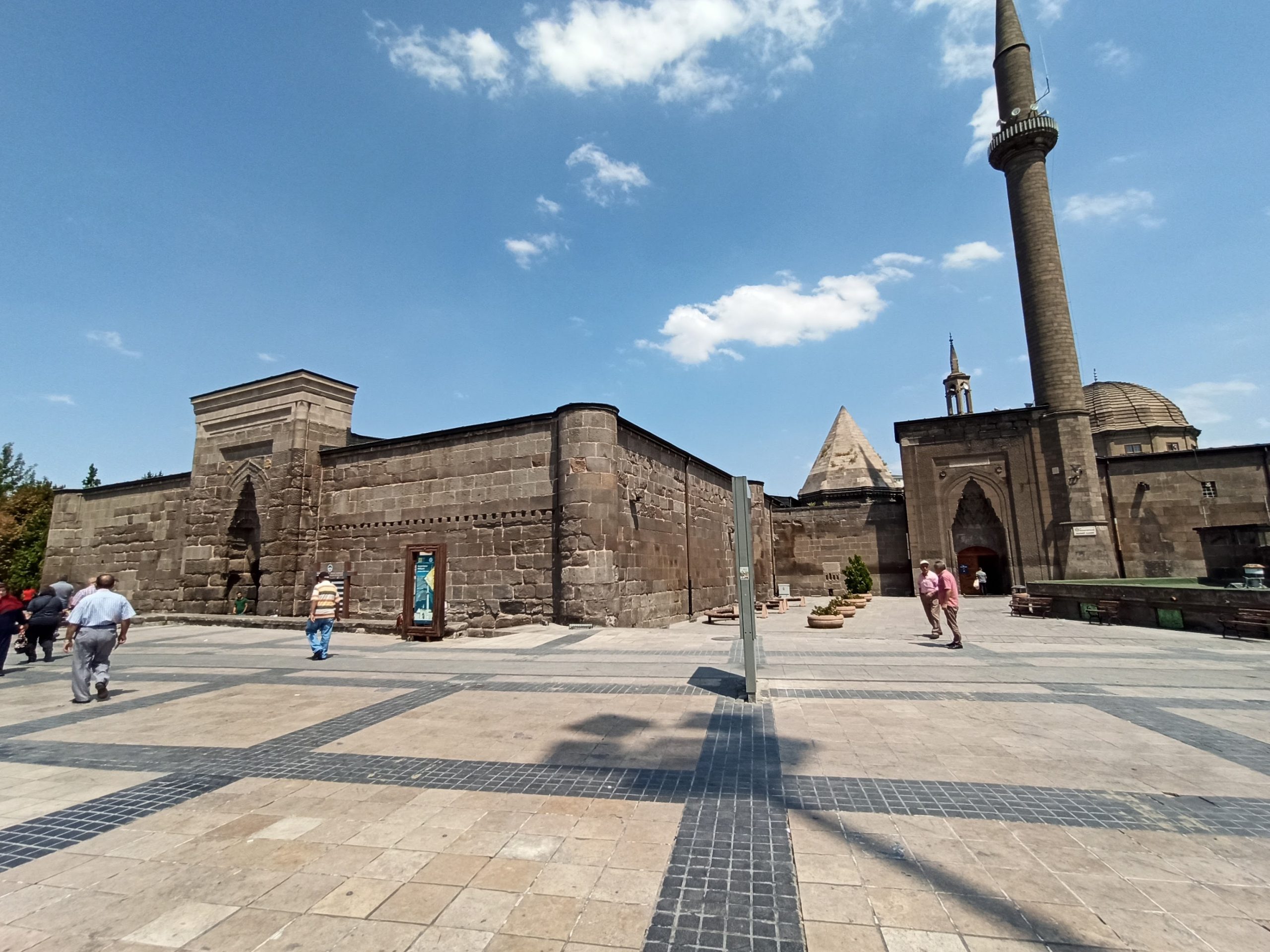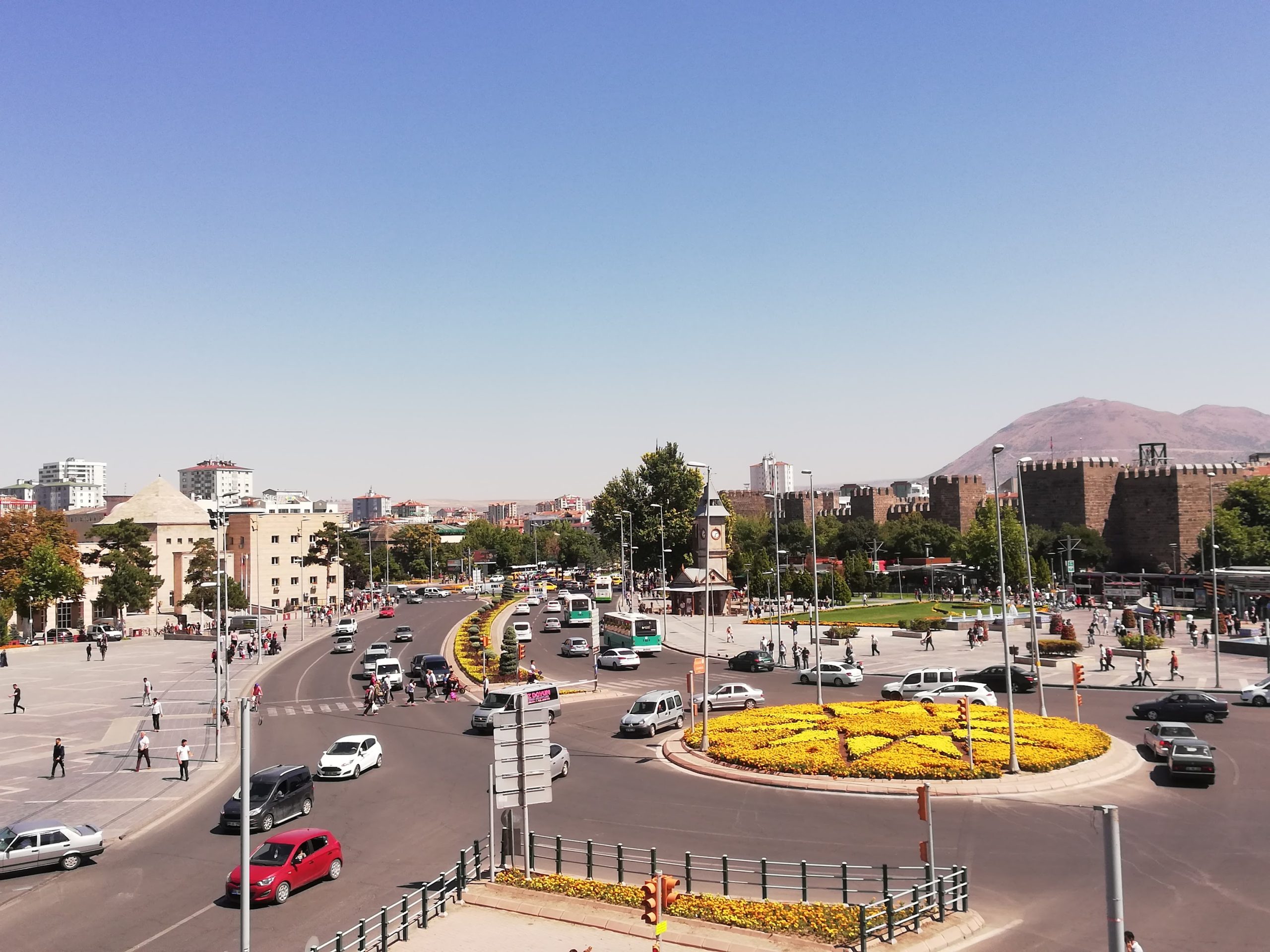Hunat Complex, which consists of a mosque, madrasah, bathhouse and tomb, was built in 1238 by Mahperi Hunat Hatun, wife of Alaaddin Keykubat I. The complex, mosque, madrasah, bathhouse and tomb built by Mahperi Hunat Hatun, wife of the Seljuk sultan Alaaddin Keykubat in 1238, exhibits the most beautiful examples of Seljuk architecture, which combines stone with aesthetics. Hunat Hatun Mosque, which perfectly reflects the elegance of stone with its crown gate decorated with geometric shapes and plant figures, and the madrasah with its admirable high-arched main gate, is one of the indispensable historical stops of Kayseri visits.
The mosque consists of 8 aisles parallel to the mihrab. The mosque, which has a dome in front of the mihrab, reflects the plan of Malatya Ulu Mosque. There is an expansion such as the mihrapönü of Erzurum Ulu Mosque. The crown door and mihrab part of the building are decorated and geometric decoration is used.
While the madrasah looked like a castle from the outside, its towers were destroyed over time. It is a single-storey madrasah plan type with two iwans and an open courtyard. The ornamental belt surrounds the main iwan. Geometric decorations are dominant in the madrasa. It has gargoyles shaped like lion heads. Cut stone material was used throughout the complex. Since 1929, it began to be used as a museum with the directive of Governor Fuad Bey. The Madrasah, which was used as an Archeology museum for many years, was used as the Ethnography Museum until 1998, after the new Kayseri Archeology Museum built in Gültepe in 1969 came into service. In 1998, the museum was moved to Güpgüpoğlu Mansion and after the maintenance and repair of the Madrasa was carried out by Kayseri Governorship, it was transferred to the Regional Directorate of Foundations and put into service as a souvenir market. It still continues to be used as a souvenir market.
The muqarnas base, which is a different feature of the tomb, reflects an interesting feature.




